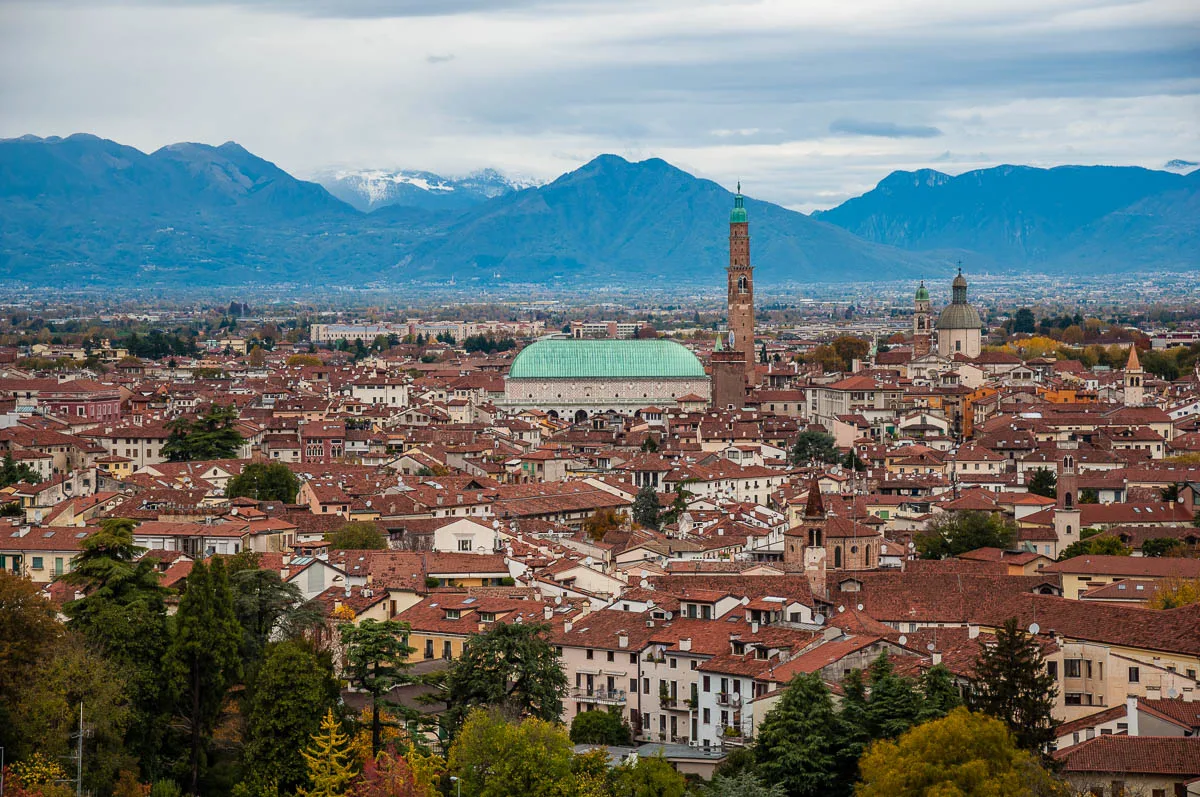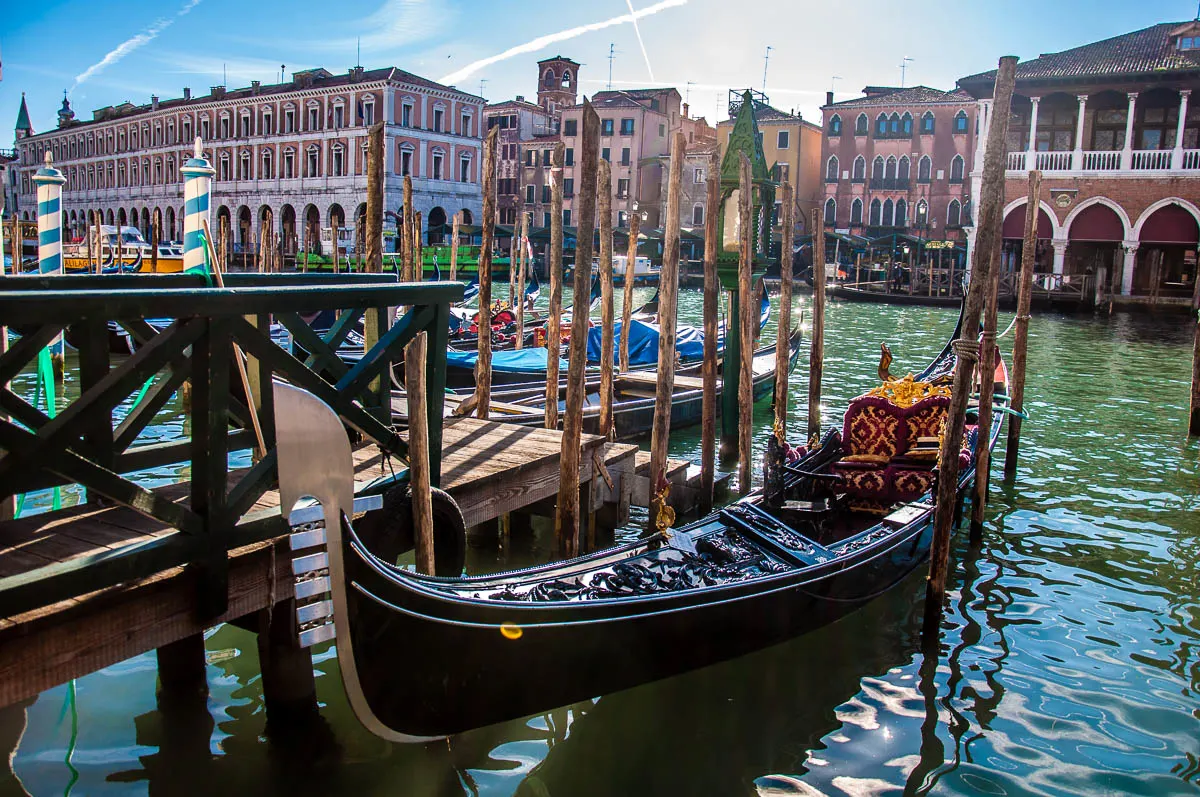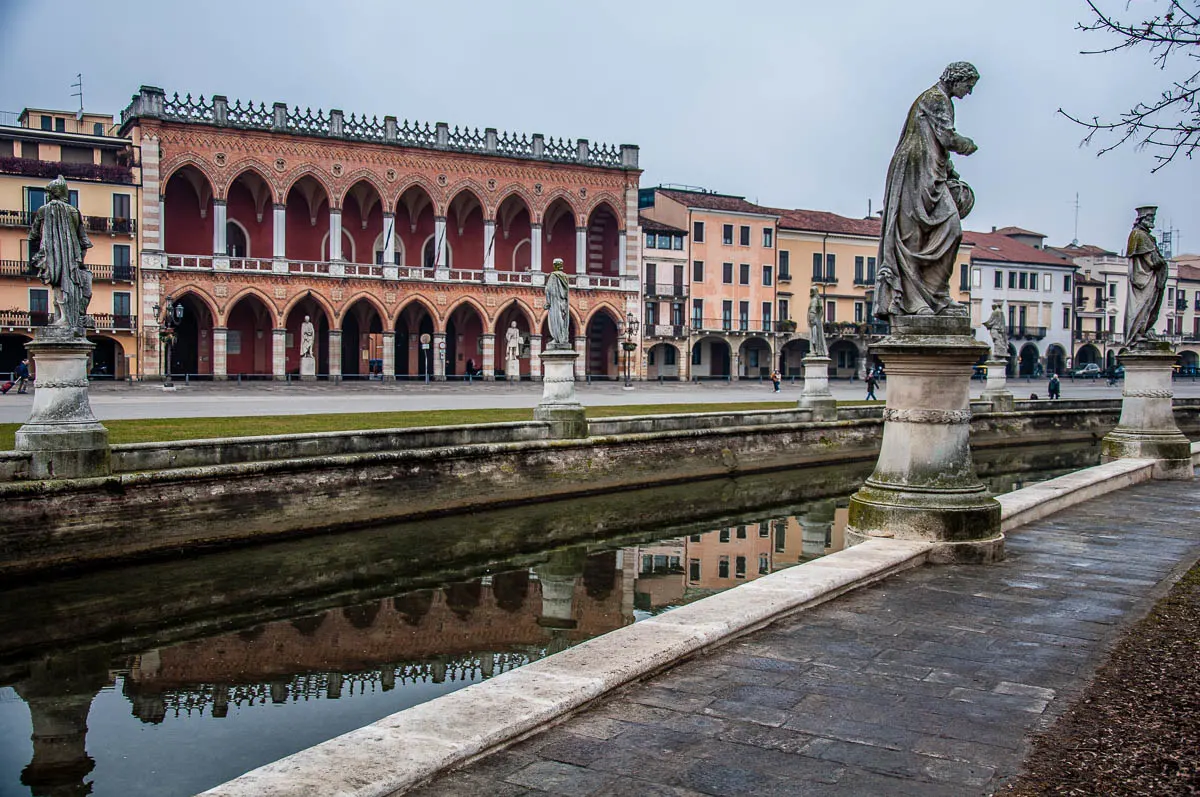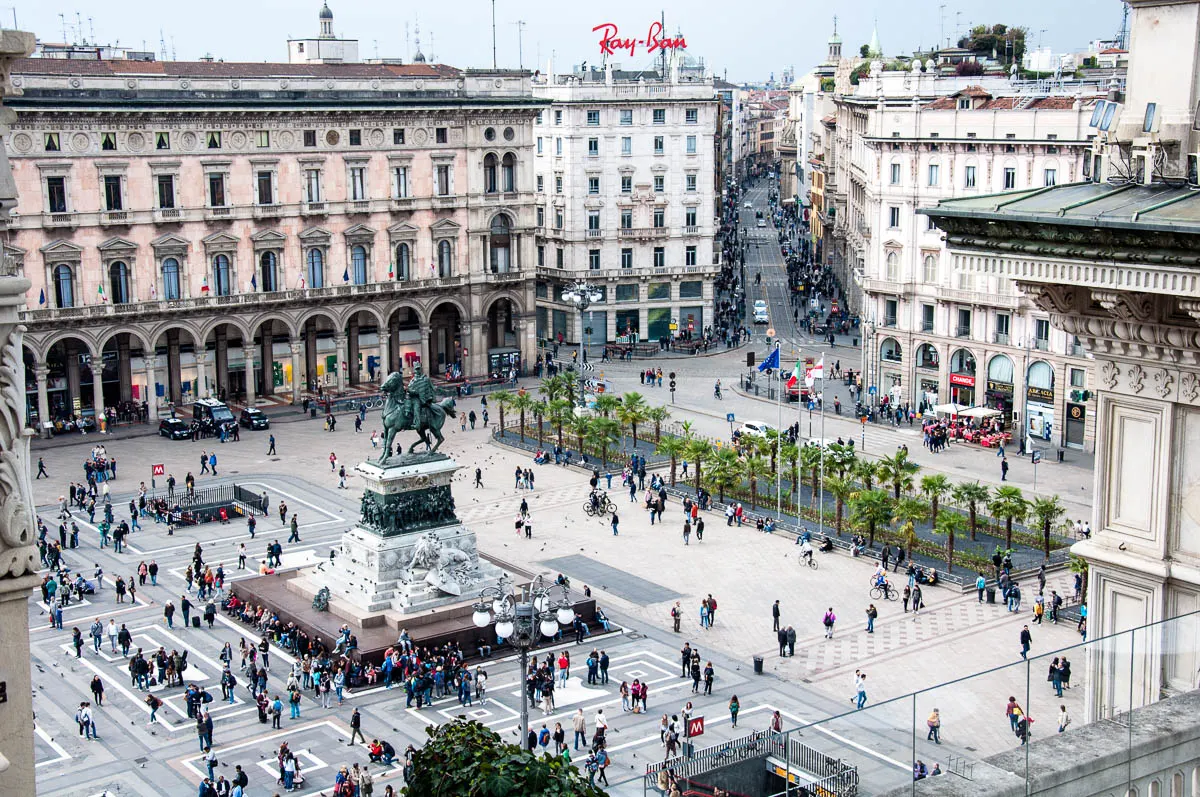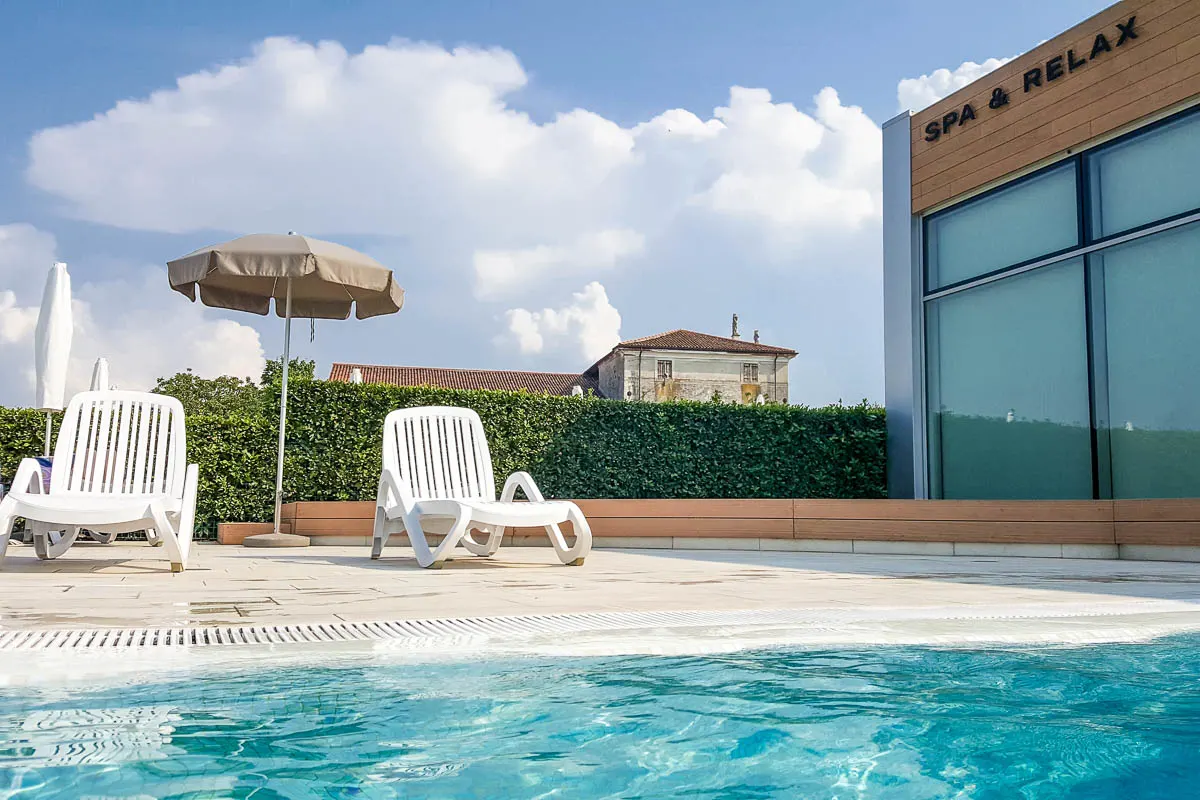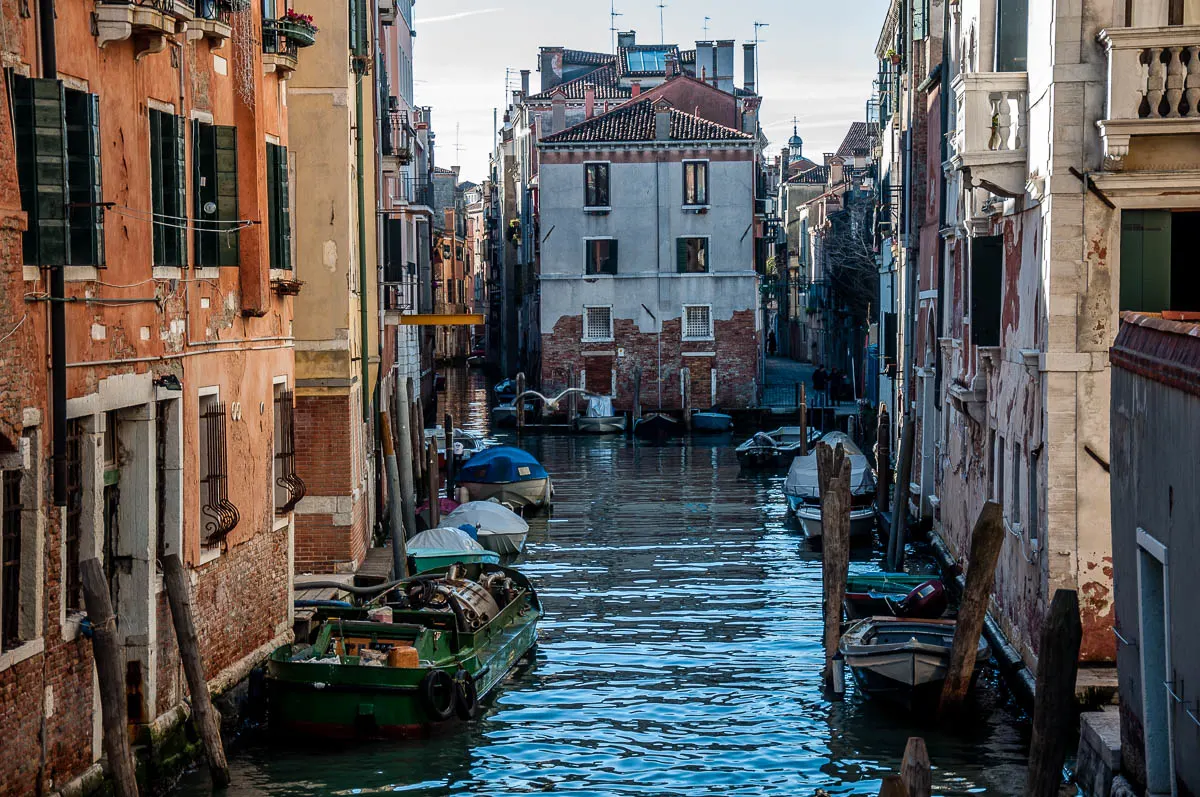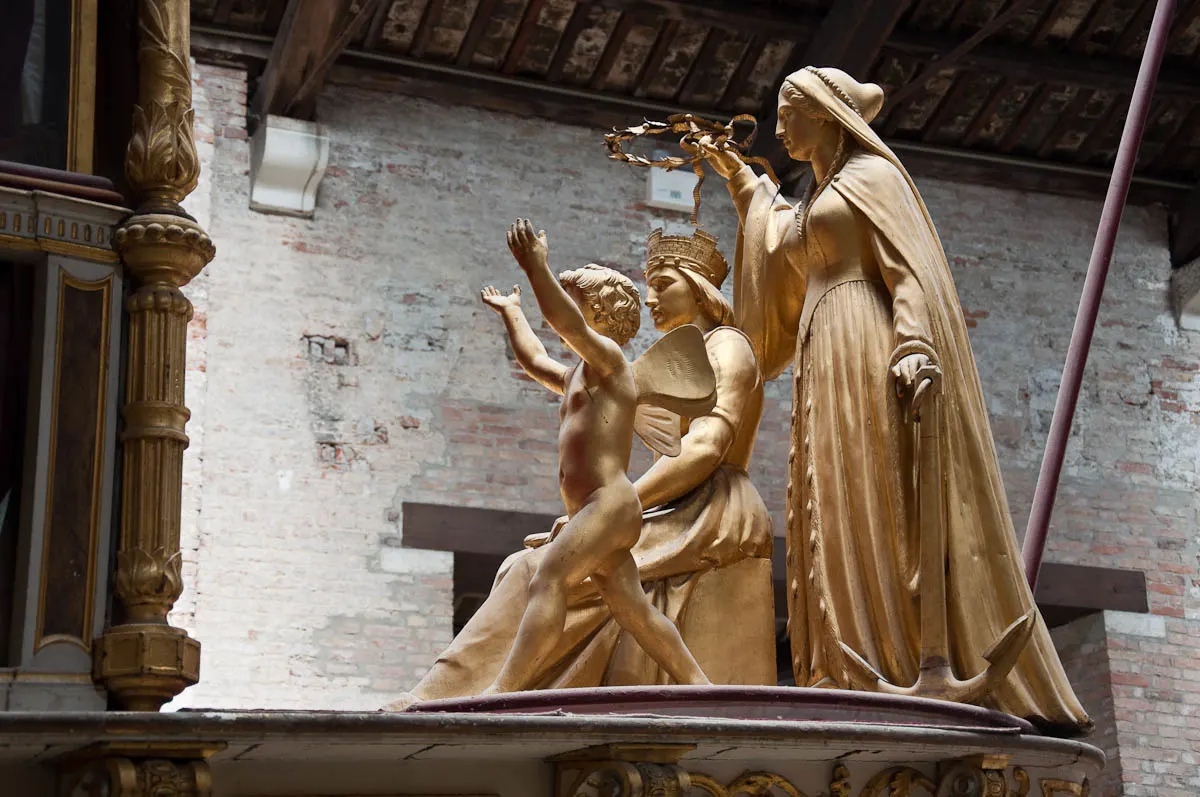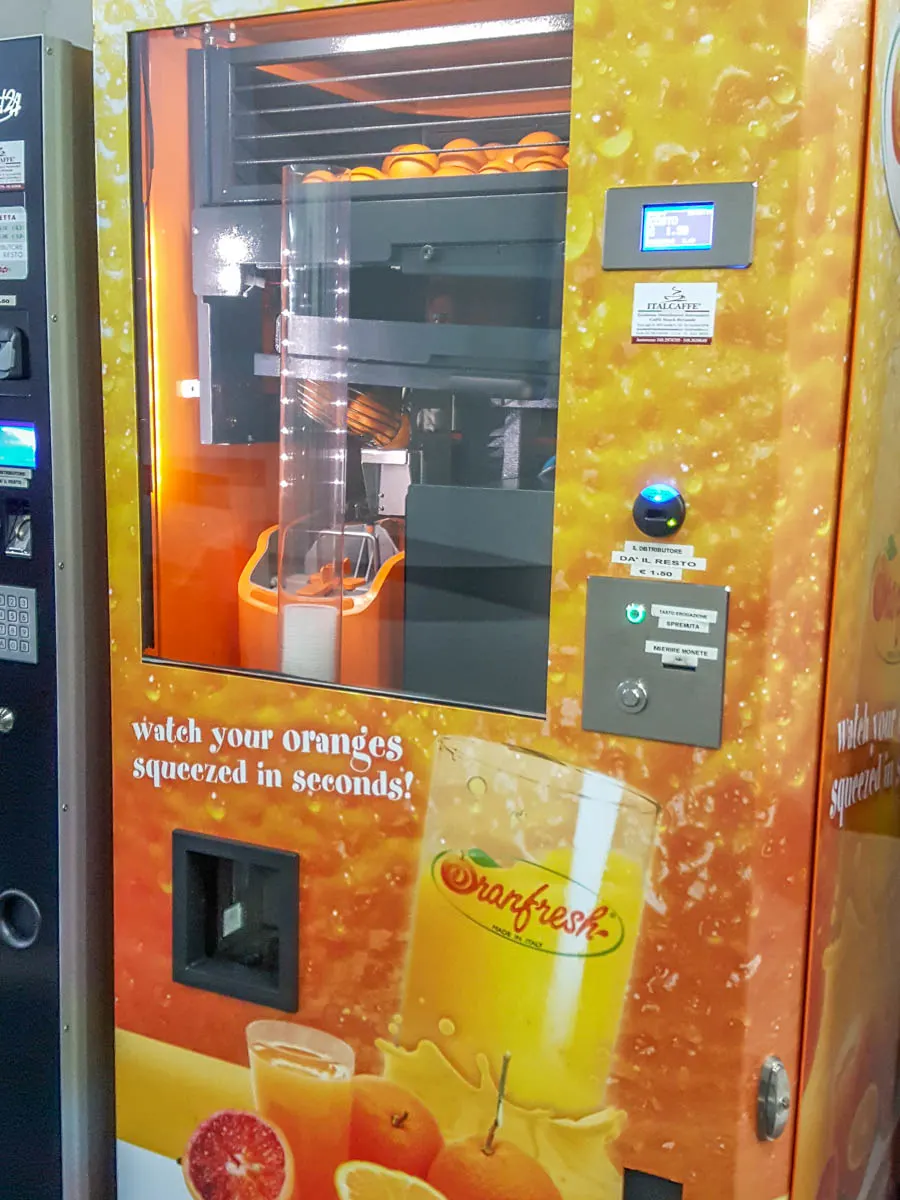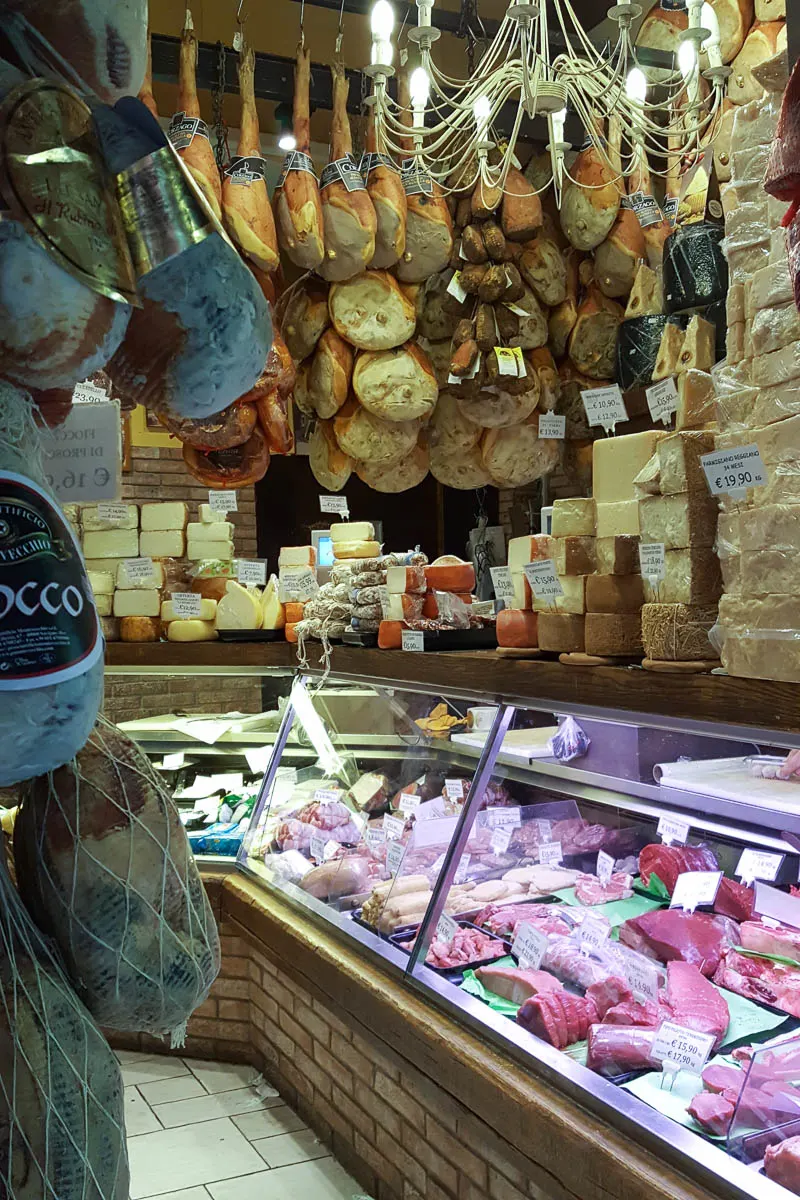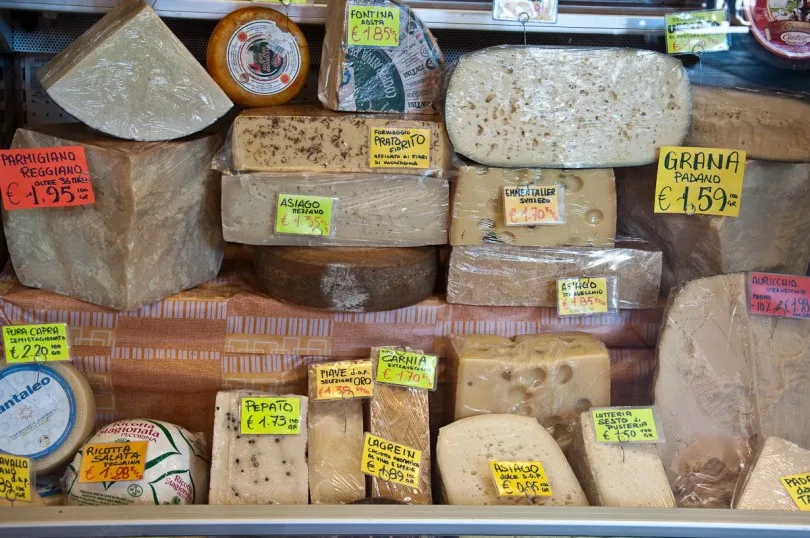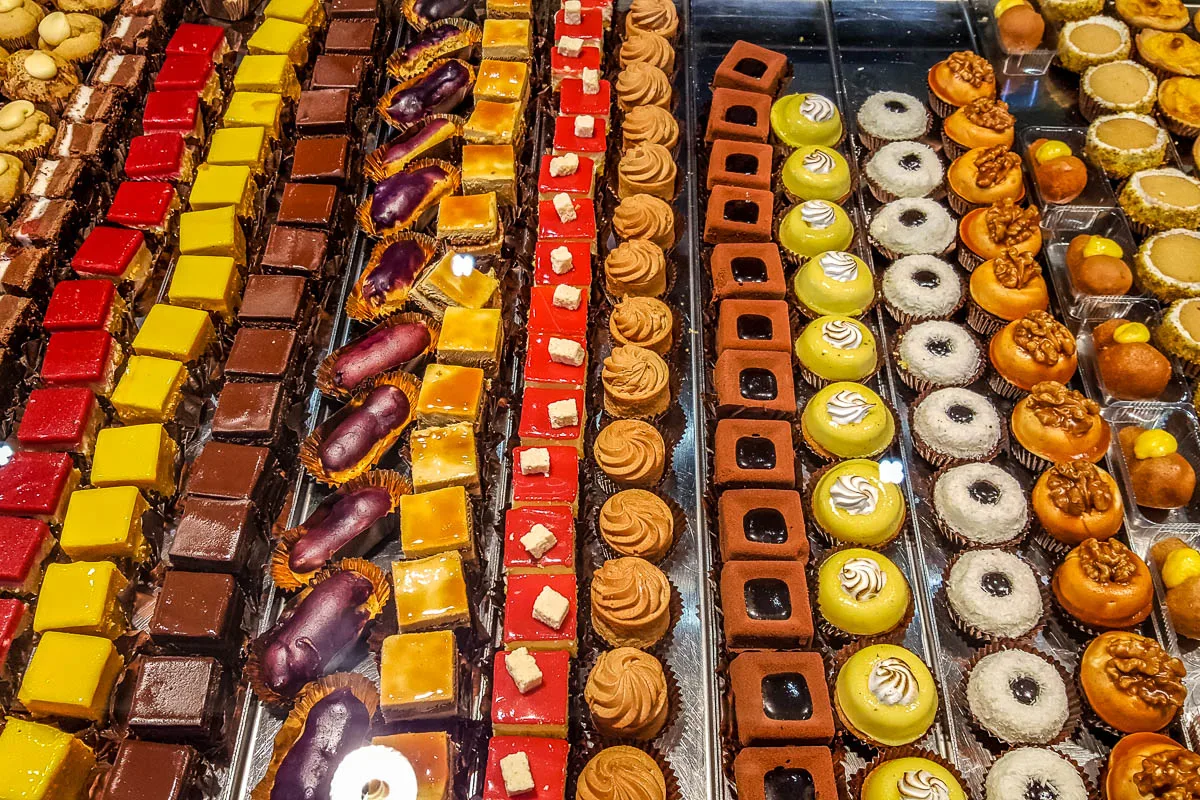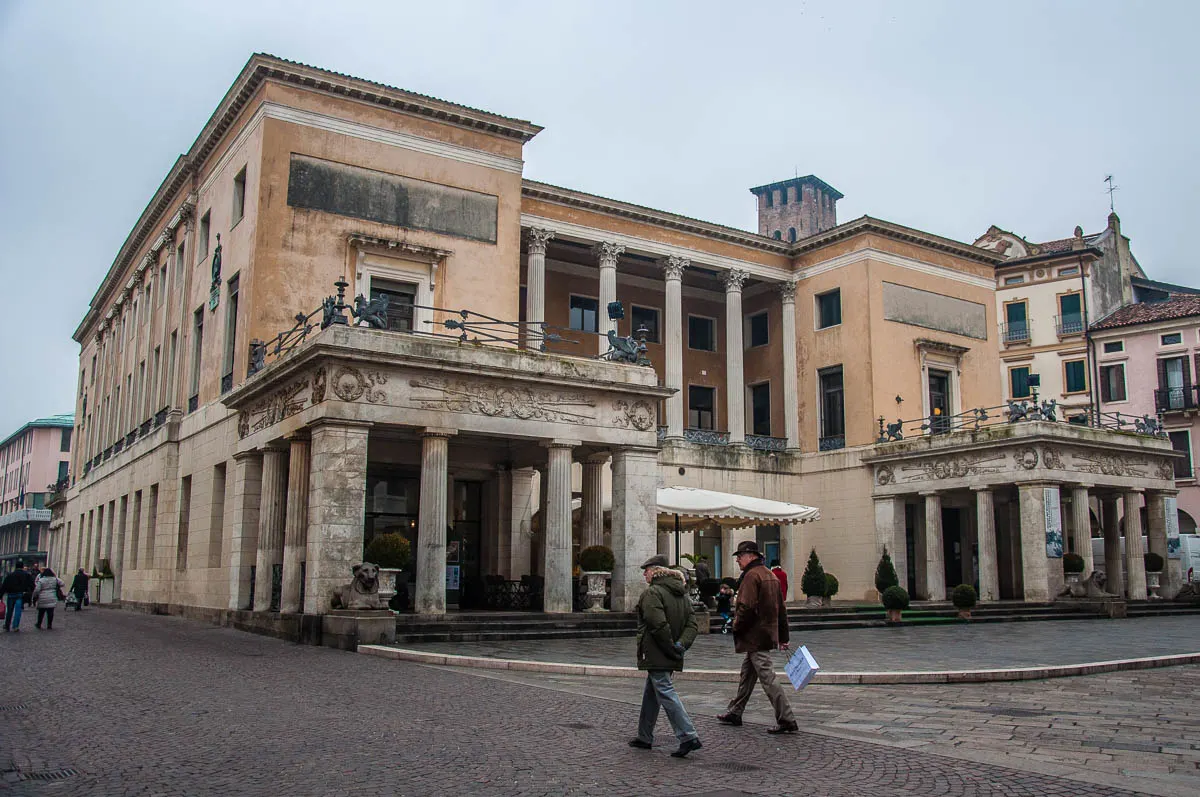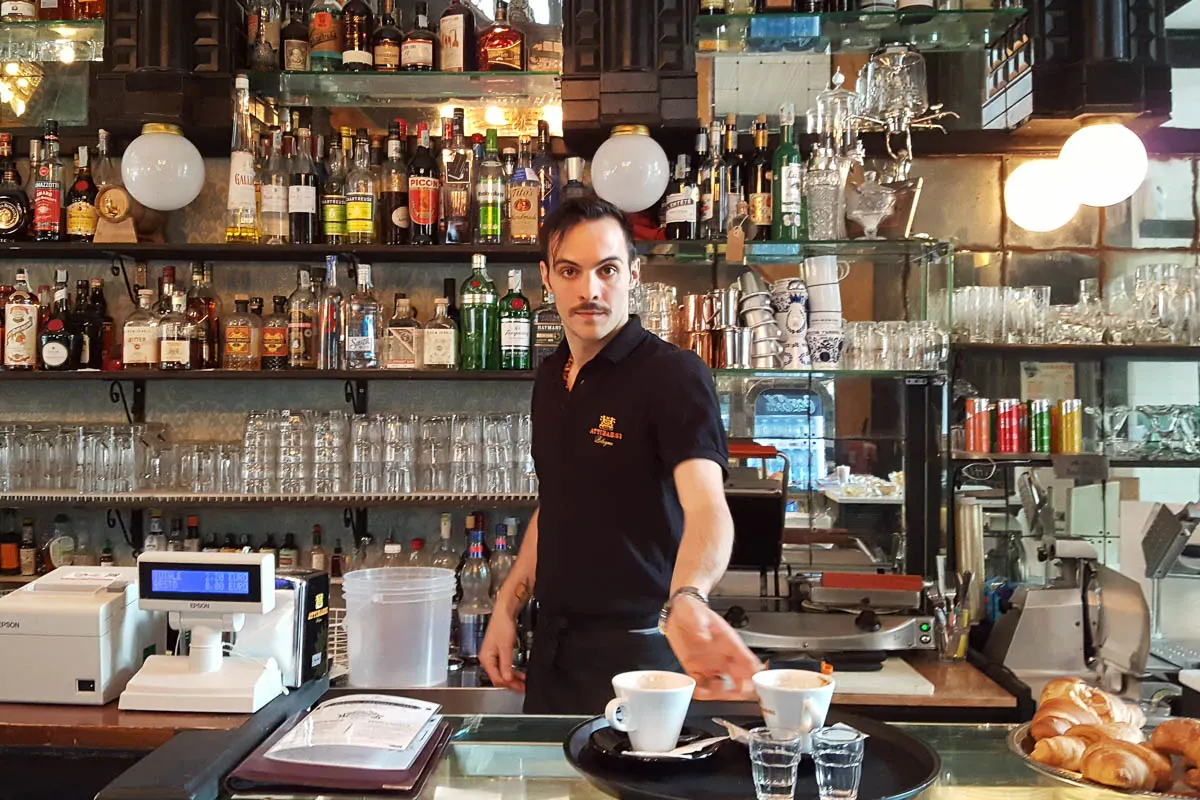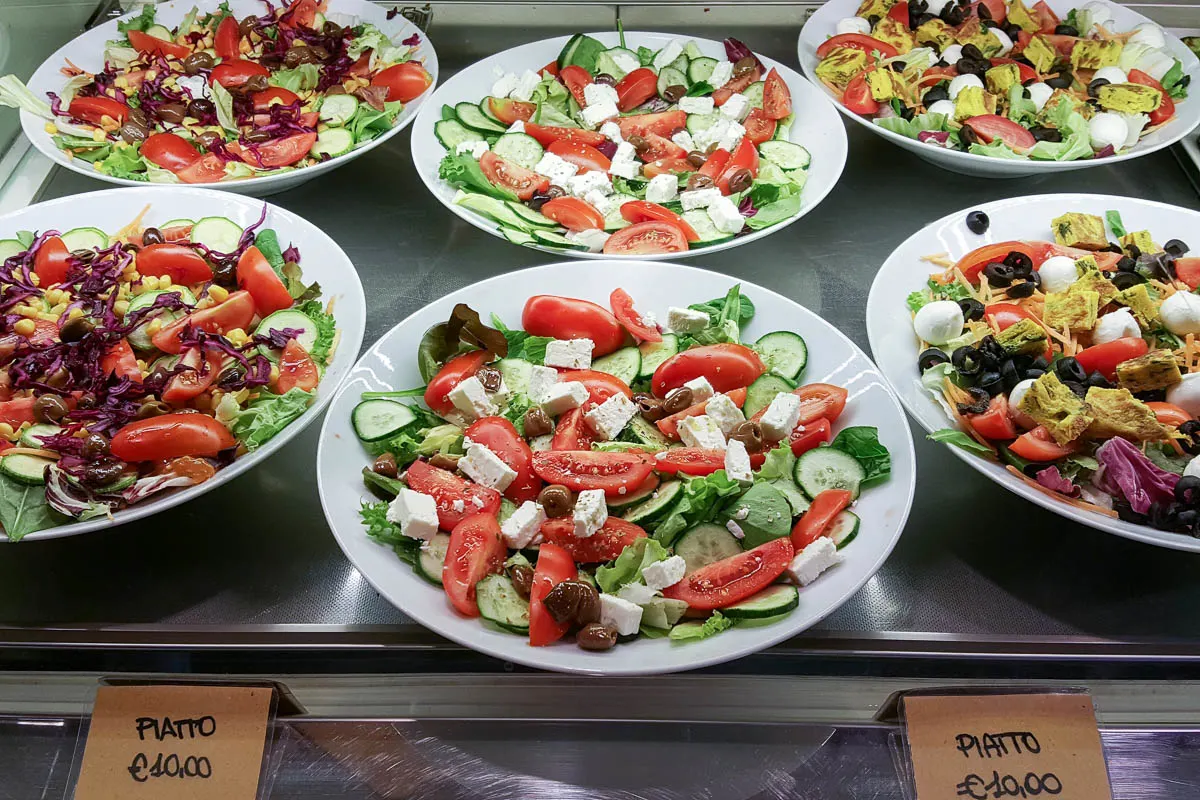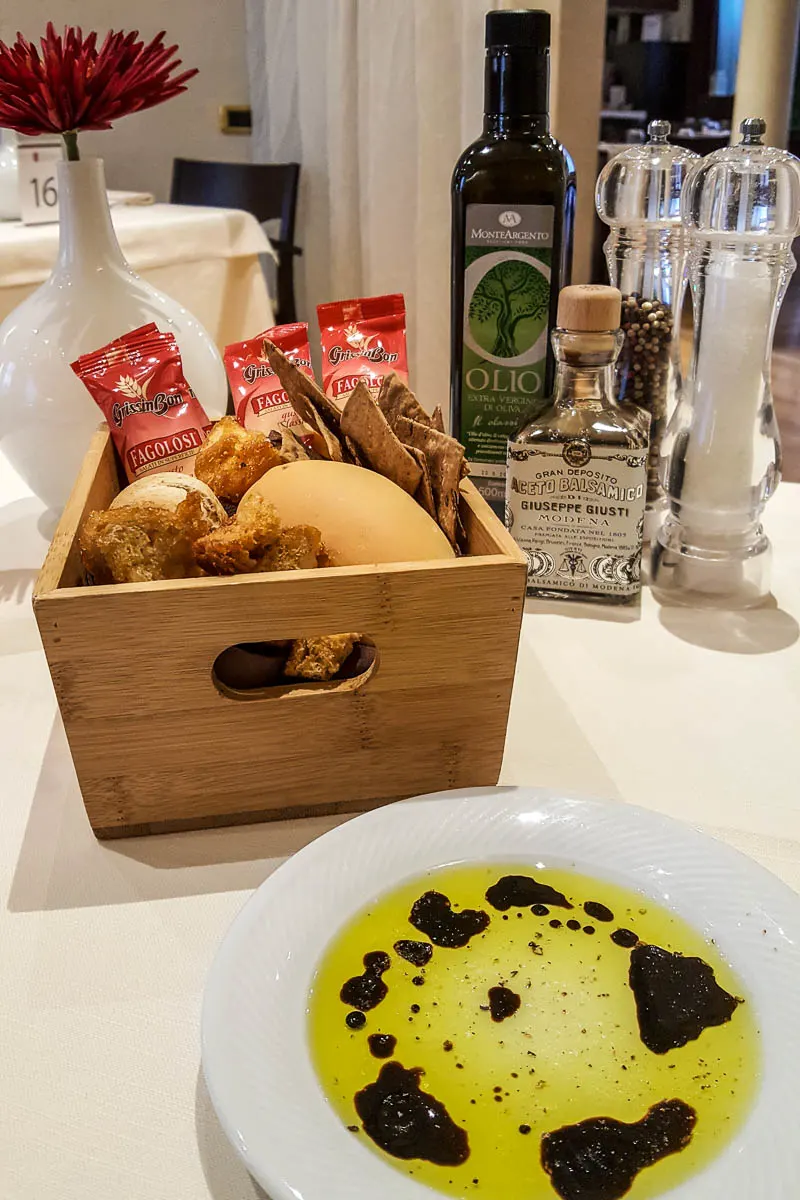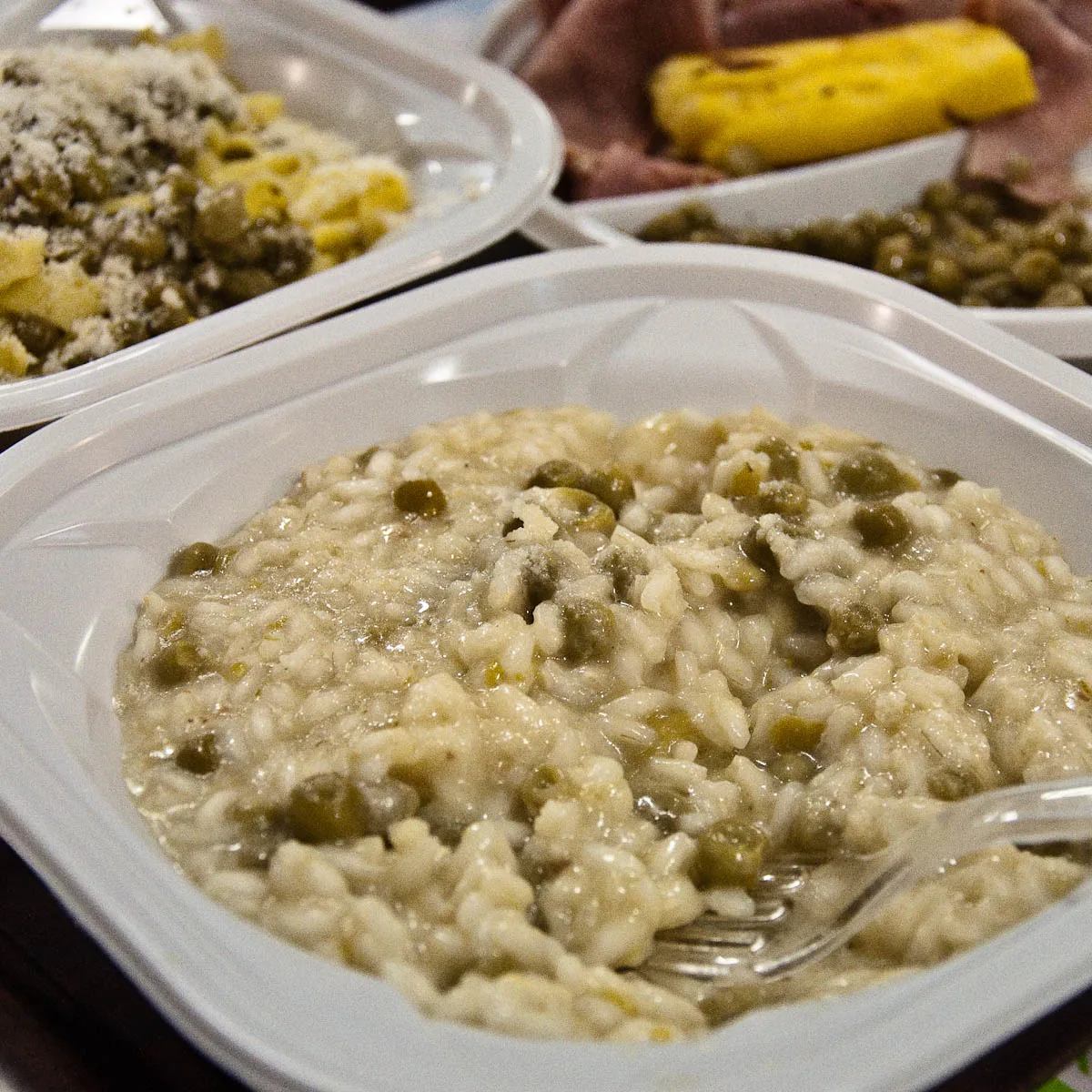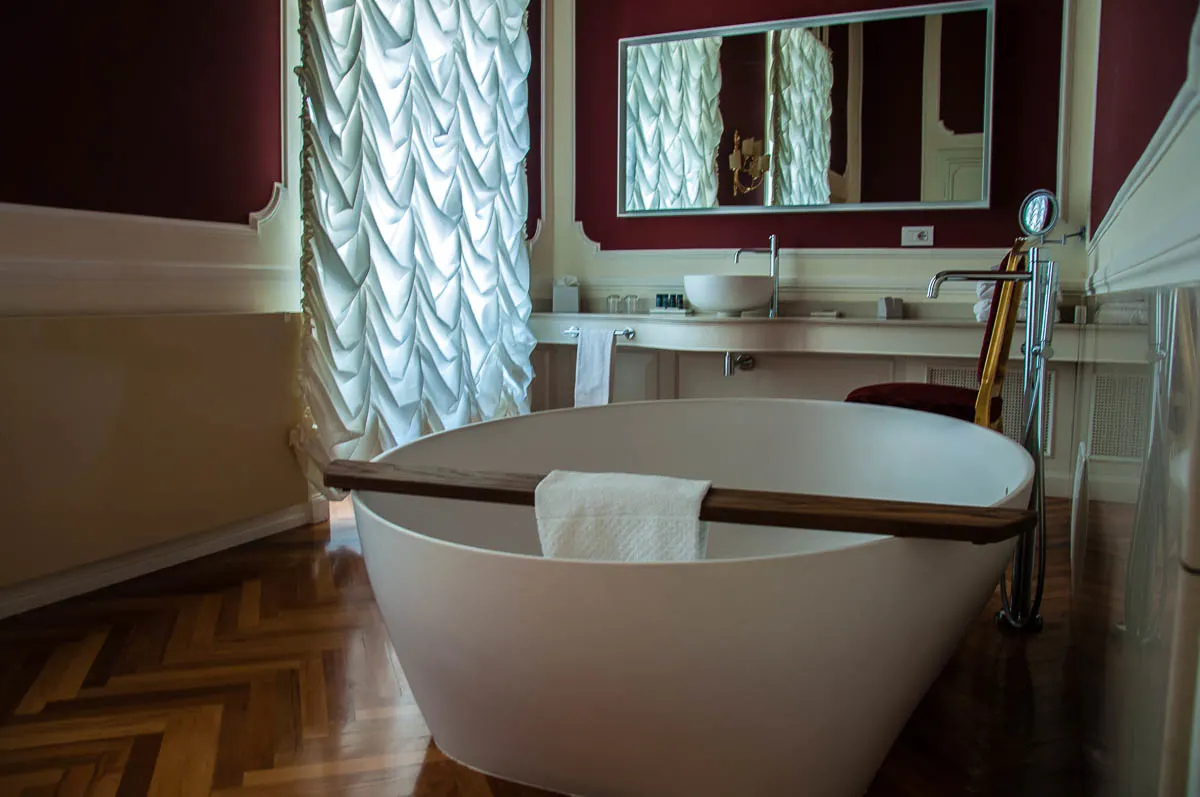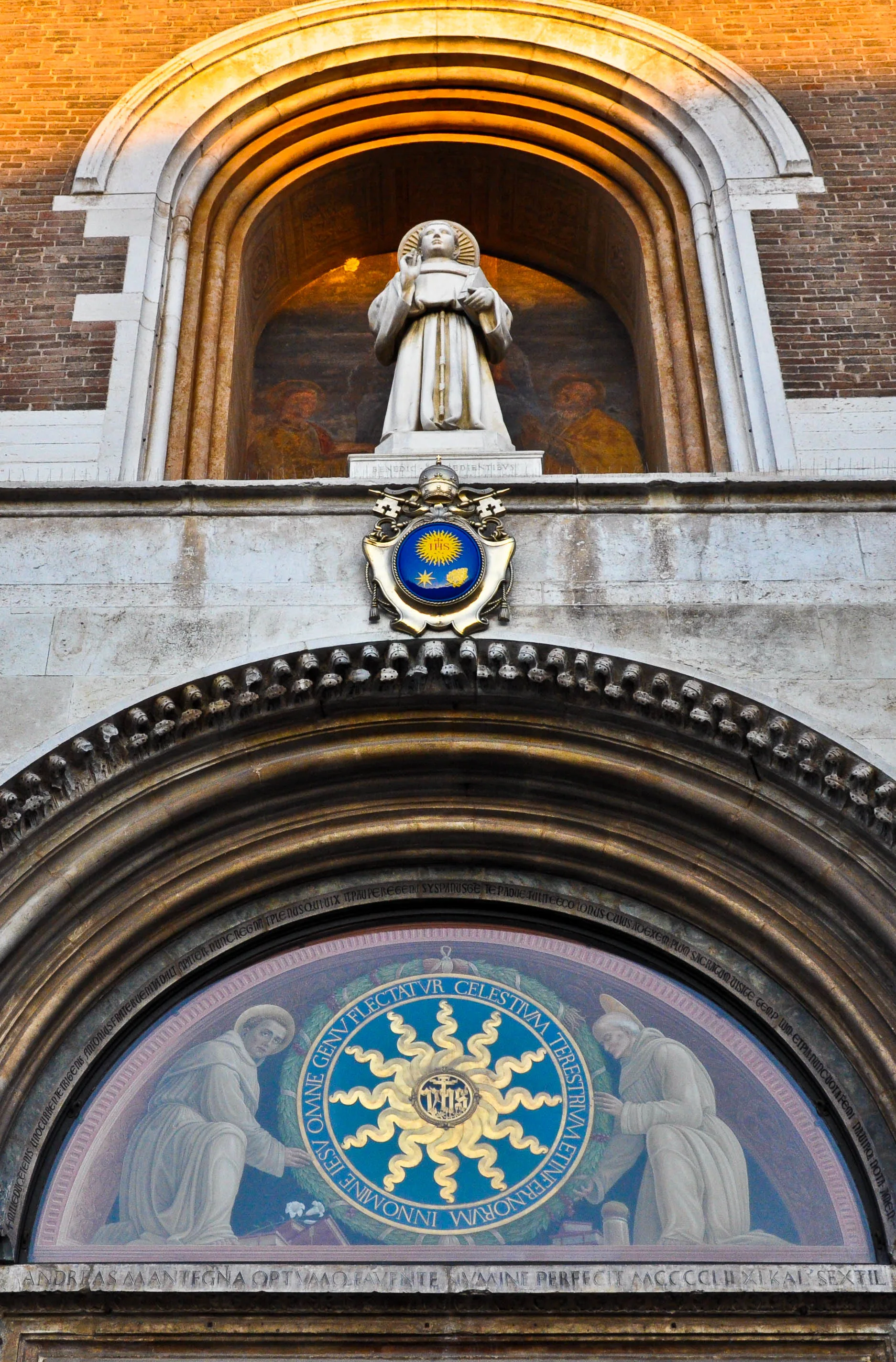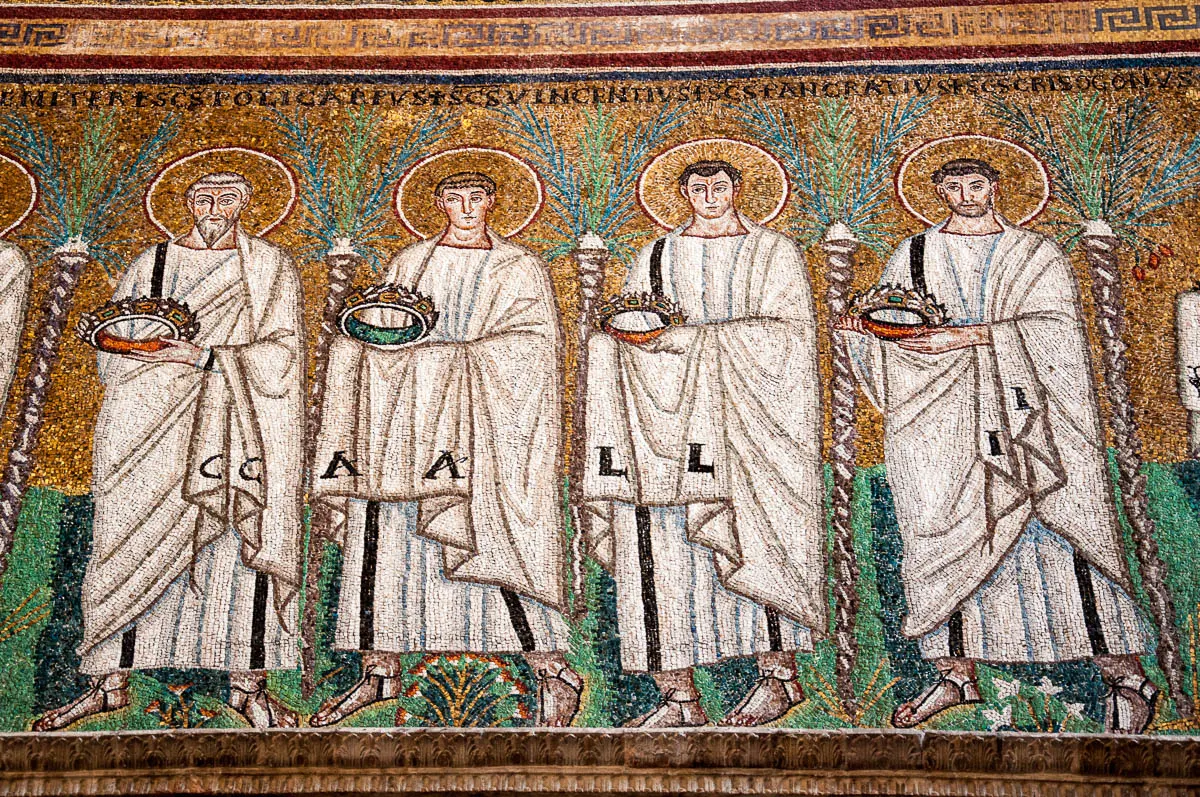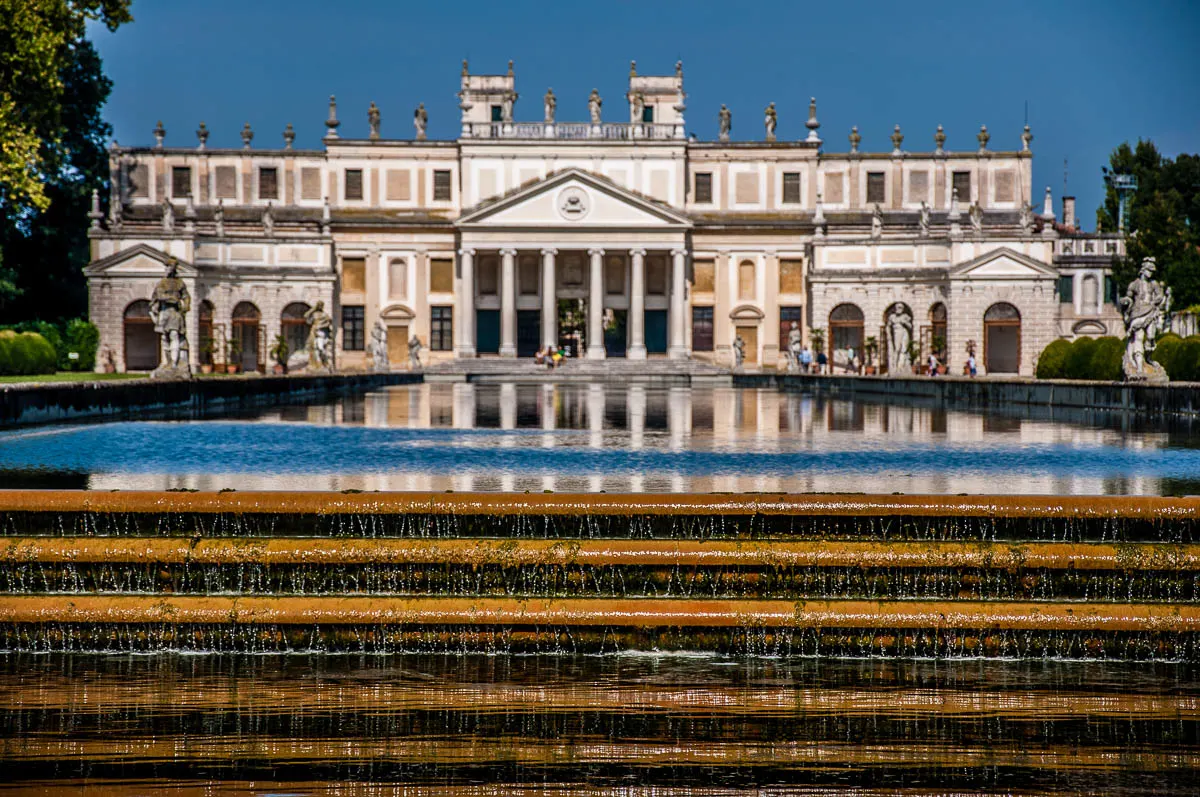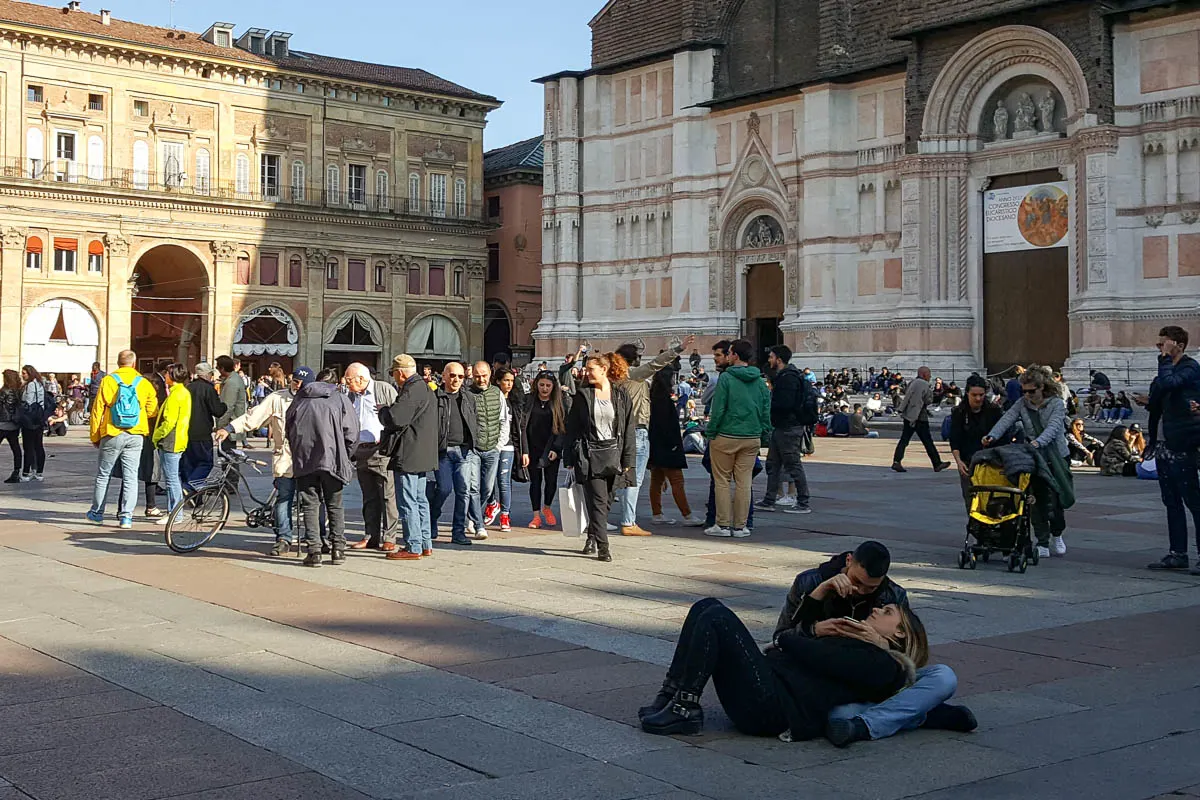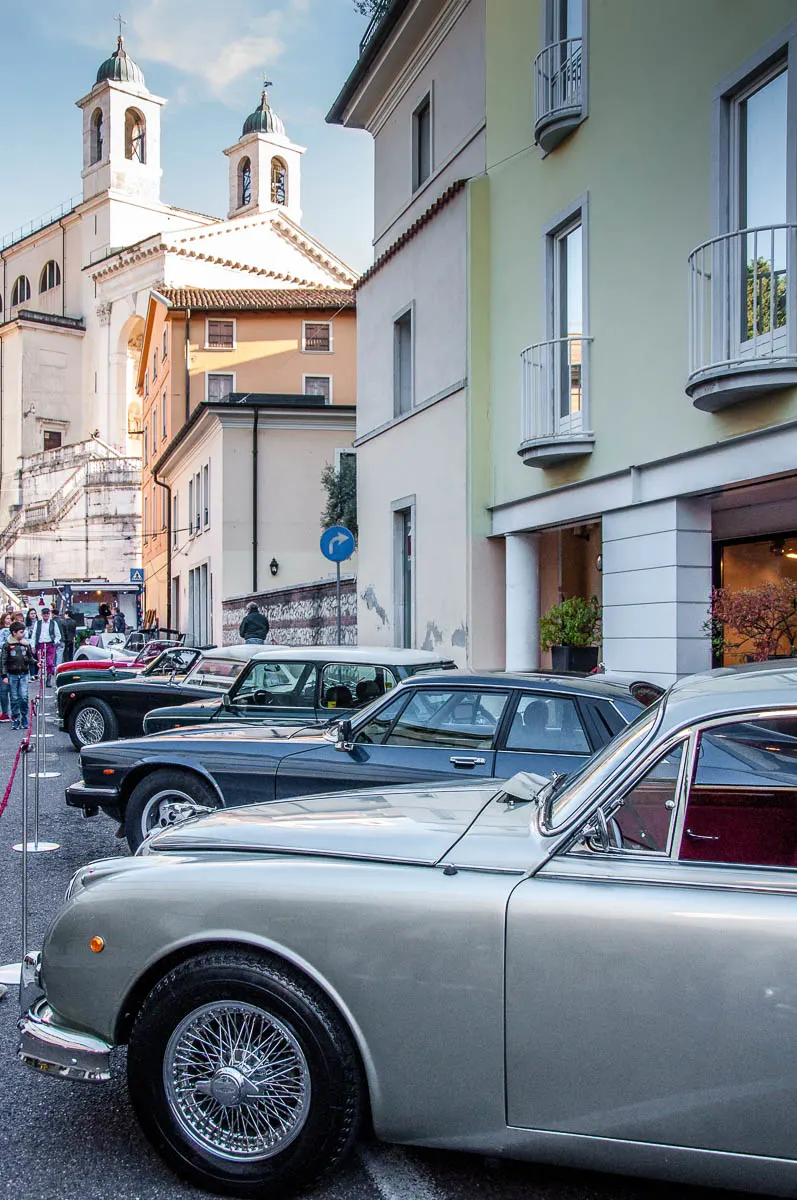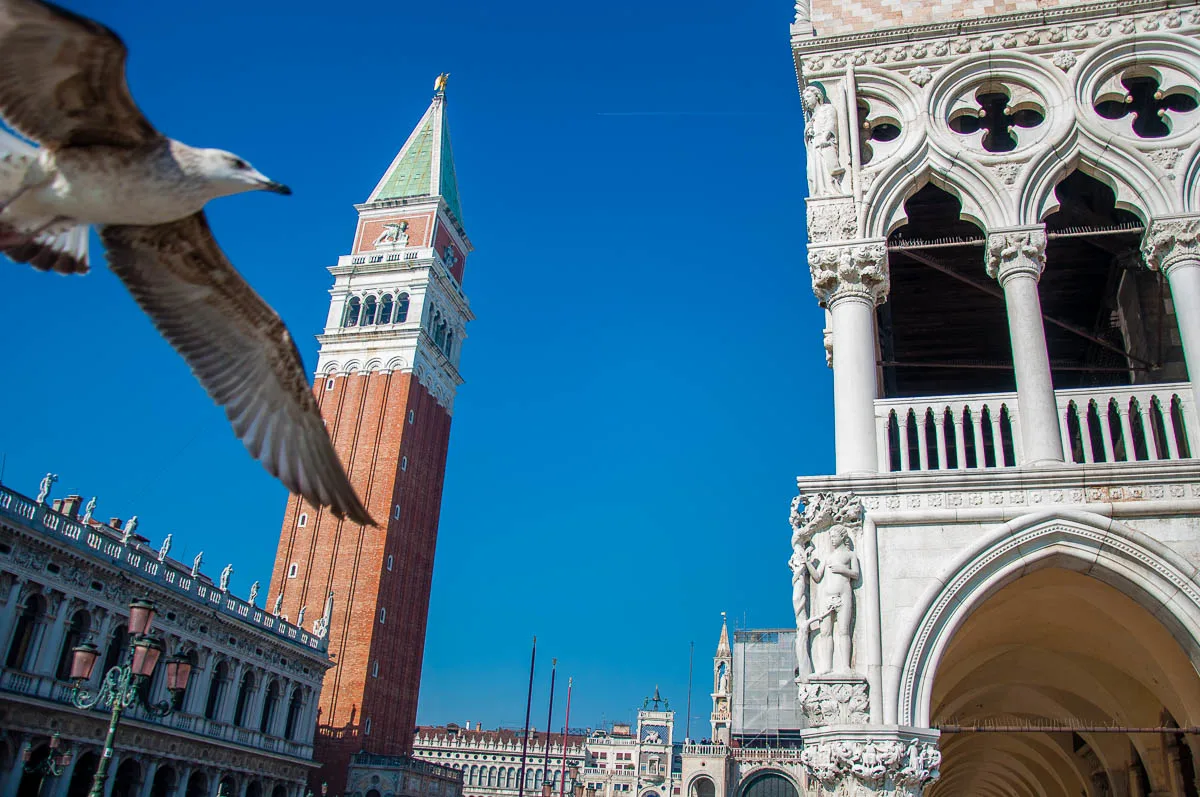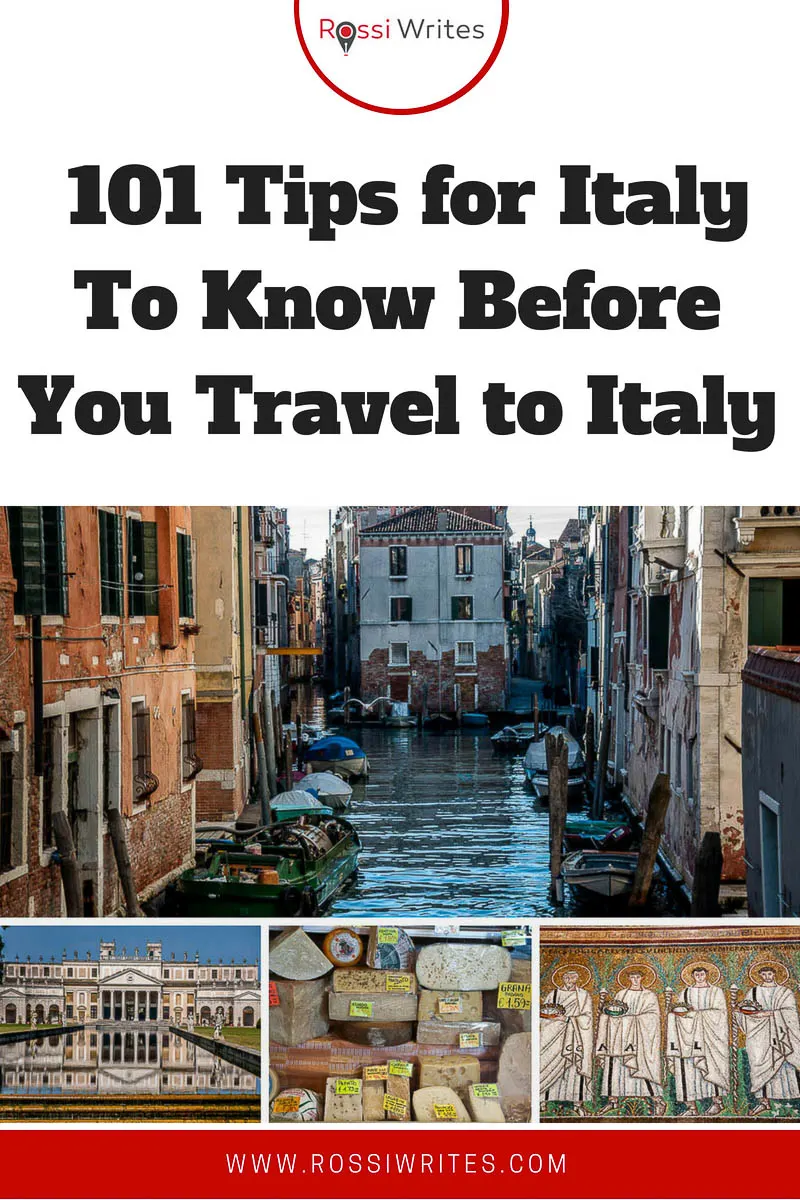Italy is a beautiful country and many people come to visit it after dreaming of it for years. So, here are 101 practical tips for Italy to help you plan an Italian trip of a lifetime.
They all have been personally tried and tested by me during my four years of living in Italy. In this blog post I have distilled the most important information I have learned during this time in order to make your Italian experience as smooth and enjoyable, as authentic and hassle-free as possible.
Italy has so much to offer to the curious traveller. Exploring its art, museums, food, and traditions is a sure proof way to create lifelong memories. Yet, the sheer number of sites and cities to potentially visit in Italy can make it very difficult to decide where exactly you want to go to in this vast in terms of possible experiences and adventures country.
Then, once here and overwhelmed by the generous sun, the sublime art, and the sheer choice of seasonal gelato flavours, it’s only too easy to get caught out by local traditions and norms which are different to what you are used to back home:
- Like, realising that most shops and cafes outside the main tourist perimeter actually close for a few hours each afternoon. It’s annoying to not be able to buy what you want when you want it.
- Or like being unable to get the water to run from the tap when you want to wash your hands in the ladies or gents. Hint: Look for a foot pedal underneath the sink!
Knowing a few important pieces of cultural information before you set foot on the boot can make all the difference.
So, read on. I have collated everything about travelling in Italy that you need to know in advance:
101 Tips for Italy To Know Before You Travel to Italy
1. There is free WiFi coverage in Italian cities and towns but it can be difficult to connect to it. As part of the login procedure, you may need to fill in a long page with personal information and/or send a text message to a particular number. Even if you manage to do all this your foreign telephone number may not be recognised and as such not allowed to access the WiFi. It is a question of trial and error.
2. You can ask for the free WiFi password at the local tourist office. Speaking from personal experience, if you ask very politely and explain that you struggle to connect with your foreign phone number, they might just write the password on a piece of paper for you. Don’t throw that piece of paper away after you have successfully logged in. You will need to re-enter the password each time you begin a new session.
3. It is not typical for cafes and restaurants in Italy to offer free WiFi access. If you find one that does, keep popping back in so as to very quickly check your emails over a cup of coffee and a brioche or while waiting for your tagliatelle al ragu to arrive.
4. Yet, please, be aware that it is not the done thing to simply whip your laptop out and spend a couple of hours blissfully tapping away from a cafe or a restaurant table in Italy. Most cafes and restaurants here are tiny in size and privately run compared to the huge sprawling hangars of the multinational coffee shops in London for example. Also, in Italy the emphasis is on the food and drinks you consume at a cafe and/or a restaurant. Not on electronic devices.
5. Italy is divided into 20 regions with vast cultural, historical and geographical differences between them. Don’t be too ambitious and try to see it all at once. Unless you have vast amounts of time to dedicate to travelling around Italy, consider focusing on a particular region and return several times to explore other parts of the country. With long travelling times between Northern and Southern Italy you will end up spending too many hours flitting from one point to another – time that you can otherwise enjoy sightseeing and relaxing.
6. If you absolutely must see both Milan and Matera during a week-long visit to Italy, consider flying instead of taking the train. Italy is covered by a good network of internal flights (some provided by low-cost airlines) allowing you to easily get by plane from Venice to Rome or from Milan to Bari, for example.
7. Italy is also covered by a good rail network which can be a very cost-effective and easy way to travel. There are different types of trains. For a detailed list of tips for rail travel in Italy, check at the end of these two blog posts:
- 11 of the Best Day Trips from Venice (With Lots of Photos, Travel Times, and Italy Train Tips)
- Day Trips in Verona – 16 Destinations in Italy to Fall in Love with (With Travel Times and Train Tips)
8. The size of a city or a town in Italy is not proportional to the amount of sightseeing you can do there. Don’t discard smaller towns and villages based on the number of artifacts you expect to find in them. Every place in Italy has a multi-century history with lots of events of local and even national importance having taken place there. You may be absolutely amazed by the frescoes, paintings, architecture, castles, parks, and traditions you may end up discovering for yourself in a town so far off the well-trodden tourist track that you may have never heard of it. Yet, here it is and its heritage is simply staggering. For ideas, have a look here:
- Ten Unmissable Small Towns in the Veneto, Northern Italy
- Bagolino Carnival – An Authentic Italian Experience You Mustn’t Miss
9. Italy is not all about art and cultural heritage though. The country is blessed with beautiful nature and it is dotted with hills, mountains, rivers, deltas, nature reserves, and many other great natural features. Consider earmarking a day for a nice hike. Here are some ideas to get you started:
- 3 Ideas for a Great Day Out in the Euganean Hills
- Fish, Fossils, and Frog Or My First Hike in Italy
- 20 Family-Friendly Walks and Hikes Up to an Hour and a Half from Vicenza – First Part
- 20 Family-Friendly Walks and Hikes Up to an Hour and a Half from Vicenza – Second Part
- Italy Through the Eyes of a Passionate Hiker
10. Numerous thermal and hot mineral springs are another natural feature that Italy is blessed with. Spa facilities and whole spa towns are abundant throughout the country. Some of the most famous ones are Abano and Montegrotto Terme in the Euganean Hills, Sirmione on Lake Garda, Bibione on the Adriatic Sea, and Taormina in Sicily. Not to forget the most famous free spa in the world – Cascate del Mulino (Saturnia) in Tuscany. No matter where you are in Italy, take advantage of the local spa facilities and enjoy the rejuvenating properties of the mineral springs – a millennial tradition that was championed by the Etruscans and the Romans.
11. Beware that smoking is widespread in Italy. As per data from 2015/2016 – 21.4% of Italians smoke which means every fifth of them. Smoking is not allowed in all public places like bars, restaurants, and offices. Many Italians though smoke while they walk down the street. Shiny cigarette-vending machines are installed in front of the local tabaccherie shops for people to easily feed their habit out of working hours.
12. A tabaccheria is a small shop which sells not only tobacco and cigarettes but also newspapers and magazines, tickets for the local buses (and sometimes train tickets), candy, and even some toys, notebooks, pens, postal stamps, and all sorts of knick-knacks. It is a very useful shop the owner of which often knows the best local places and the best gossip.
13. Talking of tickets, make sure that you validate your bus ticket as soon as you board a bus in Italy. There are small machines installed in the immediate vicinity of the driver where you can insert your ticket and it will be automatically stamped with the date and the hour of boarding. In some places, the machine cuts a tiny square off the edge of the ticket. Train tickets must be validated by inserting them in a special machine before you board the train. These machines are installed inside train stations and along the platforms.
14. If for whatever reason you forget to validate your train ticket, try to find the ticket inspector as soon as you realise your mistake. Then plead for his mercy. In my personal experience, I have found ticket inspectors on Italian trains to be very amiable if you are polite, apologetic, and respectful. If you don’t have a ticket or you have forgotten to validate it, don’t play stupid, don’t shout and don’t pretend you don’t understand anything by speaking English or another foreign language. It is purely anecdotal evidence but I have seen Italian ticket inspectors in such cases switching easily to English and/or French and not having any trouble fining the respective person. Fines can be very steep.
15. Knowledge of the local customs and laws is implicitly expected. Just because usually there are no large signs advising what can and can’t be done, this is not an excuse to do something that is not allowed. Like eating seating on the steps of Italian historic and/or religious buildings and swimming in the canals of Venice.
16. In fact, Italians usually don’t really eat and walk around. Traditionally, eating is done at the table. Even at your local coffee shop when you buy something as small as a brioche to go, they don’t just hand it to you wrapped in a serviette to munch as you stroll down the street. Instead, they put it in a little paper bag for you to take to your office, to a bench in the park or other such suitable environment and enjoy it there. I admit, I have eaten a brioche running down the street being late for an appointment but I have very rarely seen anyone else do it.
17. This is so because Italians live by the tenets of the bella figura – the efforts made to appear aesthetically accomplished both externally and internally. It’s like working on a constantly evolving piece of art – you, your body and your soul. As such, expect to dress the part. Nice, ironed clothes, tasteful statement jewellery, muted tones, and a light scarf artfully knotted around your neck will win you cultural kudos. Especially on visits to churches and other religious sites where bare legs and shoulders are strictly discouraged. You may even be refused entry if your clothing reveals too much flesh.
18. At the same time, make sure that you wear your most comfortable shoes when exploring Italy. The historical town centres are usually covered with uneven cobbles and pavements, so walking in high heels (no matter how minuscule) all day may feel like murder on your feet and dampen your general disposition of spirit.
19. By the way, sightseeing in churches during mass is not allowed. No matter what your faith is (or lack of thereof), you will be welcome to come in and join the service and prayer but not to stroll around looking at frescoes and paintings.
20. Even though photography and video taking are generally allowed in most museums, churches and other art and culture institutions in Italy, always make sure that this is the case before you point your camera and start snapping at priceless works of art. There are still hundreds of sites where either photography is forbidden or you can take photos only for personal use but not to publish them online or in printed media without explicit permission and/or payment. Or you may be asked to pay an additional fee for the privilege to take photos. In all cases, never use flash plus tripods are rarely allowed. The reasons can be various – from easier crowd control to making sure that the priceless works of art are well protected from eager tourists. Don’t go against the rules. You will be reprimanded. Sometimes, in a very clear and loud voice.
21. On the first Sunday of each month, Italy’s state museums open their doors for free under a countrywide initiative called Sunday at the Museum. Its official hashtag is #DomenicalMuseo and it is a great opportunity to explore sights and artifacts which, otherwise, may have remained outside of your reach. Clik on this link to find out how you can visit for free once a month over 450 museums, galleries, archaeological sites, monuments, parks and gardens all over Italy:
22. When planning a visit to a museum or a place of interest outside of the large Italian cities, make sure that you check its opening times in advance. There is a big chance that riposo – the Italian lunch break – may be observed or that opening hours are reduced in winter. You don’t want to travel for miles only to have to wait for hours in order to see what you wanted to see and/or miss it completely.
23. Riposo – the two- to four-hour break Italians take at lunch – is very much practiced all over Italy. The big tourist hubbubs may maintain orario continuato (uninterrupted opening hours) but the further afield you travel, the most likely it is that you may be caught out by shut shutters in the hottest hours of the day. The best advice I can give you is to take riposo in your stride and plan your activities around it. It is nice to have a little bit of a downtime when the sun is baking hot outside. For more tips and tricks on how to make the best of riposo have a look here:
24. If you need to buy something outside normal working hours in Italy, look for automated shops staffed by the most wondrous vending machines. They are stocked to the brim with all sorts of food: mozzarella, sliced salami, bread, biscuits, and drinks so that you can fashion a quick lunch if need be. There are also vending machines for pharmacy products (including condoms), all sorts of coffee-based drinks, ice, fresh flowers (usually in hospitals) and there are even machines for freshly squeezed orange juice (please, see the picture below). Have a look here for more photos of vending machines you can find on Italian streets:
25. If you need an out-of-hours pharmacy in Italy, your nearest pharmacy should have an electronic display outside showing the farmacie di turno (pharmacies on duty) in the vicinity. Click here and scroll to the bottom of the page to see what these electronic displays look like.
26. By the way, in Italy painkillers like paracetamol easily cost ten times more than in England. Whereas in England you can buy a supermarket brand of paracetamol for less than 50 pence, expect to pay 3 or 4 euros for a small pack in Italy.
27. Some of the large supermarket chains in Italy are: Emisfero, Rossetto, Auchan, Lidl, Ali & AlIper, Sisa, and Pam. Tigota (with the accent on the a) is the Italian answer to Boots. Bear in mind that these shops often have their windows painted white with no promotional posters attached to them. In fact, when we first moved to Italy, I passed by our local branch of Tigota several times thinking that it was still in construction before realising that behind the painted windows the shop was doing brisk business. Click here to find out the main differences between Italian and British supermarkets:
28. In general, queueing in Italy is a tad less organised and considerate than in England. Queue jumping and queue rage used to be quite common. To avoid this, ticket machines have been installed both in large supermarkets and smaller shops. Even some market stalls are equipped with them now. Make sure that you pick a ticket and then hang around waiting for your number to be called.
29. If there is no ticket machine, you can ask who is last in the queue and then make sure that you stay as close to this person as politely possible.
30. Any purchase you make in Italy you should be given a receipt for the transaction. Even if you spend less than an euro, the merchant/retailer needs to give you a receipt which you then need to keep at least until you leave the premises.
31. Be aware that smaller shops in town centres may have one afternoon off during the week to make up for the fact that they stay open all day Saturday (and some are even open on Sunday). Which weekday afternoon they will be closed varies per neighbourhood. Also, on Monday morning shops (even on the high street) may remain closed. This is especially valid for the smaller Italian cities and towns.
32. Food in Italy (even the one sold at the supermarkets) is generally of very good if not excellent quality. There are much less ready-made meals and more products allowing you to cook healthily from scratch. Sales assistants, especially those manning the cured meats and salami, the fresh seafood, the butcher’s and the deli counters can give you excellent advice about how to cook their produce.
33. Italian food is strictly regional with each Italian region enjoying its own specialties and delicacies. Hence, this is what the local supermarkets stock. For example, in England, we were able to buy the Tuscan salami finocchiona with ease from our local Morrison’s store. In Italy, we live in the Veneto – the Northern Italian region where Venice is. We were surprised to discover at the start of our Italian life that local supermarkets and delis generally don’t sell the Tuscan finocchiona. They stock local Venetian delicacies like speck, sopresa, Asiago cheese, and creamed cod instead.
34. Having said that, I need to tell you that certain local foods have indeed become ubiquitous all over Italy nowadays. The best example are the typical for Sicily sweets like ricotta-stuffed cannoli and cassata cake.
35. A good way to taste foods from different Italian regions is to visit a local food fair or event. Large food-dedicated fairs are held regularly all over Italy with hundreds of exhibitors – from small bio-farms to producers with centuries of history behind their backs – bringing their tasty wares to show and sell. Ask at the local tourist office if there are any such events nearby during your stay in Italy. Clik here for photos and information about a large food fair in Vicenza, Northern Italy:
36. Alternatively, visit a local food market. One would be held either daily or weekly at the place where you are staying in Italy. The food market will usually take over the central square in town and may be accompanied by a clothing and homewares market, too. Watch the locals shop and chat. It is a great place to observe authentic interactions in Italian. Make a point to buy as many different foodstuffs as you can in order to sample more of the delicious local food. Most products will be sold by the etto – a measure equal to 100 grams or 0.1 kg. Click on the following links to see photos and details about traditional markets in Italy:
- Padua’s 800-Years Old Market
- Exploring Venice: Rialto Fish Market
- At the Market
- Point 3 – Bologna, Italy – 10 Stories to Introduce You to the Fat Lady of the Italian Cities
37. Another way to taste delicious local food in Italy is to attend a sagra. These are events designed to promote a typical product like a rare local vegetable, type of meat/fish or even truffles. Dishes served at them are inexpensive yet it will be some of the most memorable food you will ever have the pleasure to sample. Sagre are held all over Italy and especially in summer, there may be several happening over the same weekend. Ask at your hotel or the local tourist office about sagre taking place during your stay in the country. Click on the following links to learn more about these authentic food events and see photos of some mouthwatering Italian food:
- Lumignano Truffle Festival – Luxury Food at Popular Prices
- Cherry Festivals in Italy – Where and When
- Fried Frogs
- The Best Peas in Italy
- The Veg That Rocked
38. Talking of Italian food, make sure that you eat your weight in gelato during your stay in Italy. The vast majority of the gelaterias you will see dotted all over Italy are independent artisans making their own gelato on-site and in dozens of seasonal flavours every day. Try as many as you can. There is no shame in it. If you want to learn all there is about proper Italian gelato, its history and methods of production, make sure that you visit the Carpigiani Gelato Museum which is 20 mins outside of the city centre of Bologna, Italy. The museum is attached to the Carpiagiani Gelato University which trains Italy’s and the world’s next generation of artisan gelato makers.
39. Be aware that there is fake gelato in Italy, too. If you see brightly coloured mounds of gelato piled high above the rim of their metal containers, you need to know that these were most likely produced with lots of artificial colourings, flavourings, and preservatives. Proper Italian gelato is made daily in small batches with real fruit and without additives. As such the gelato colours are not bright but rather muted (as they have not been artificially enhanced. Plus gelato sold in round metal containers covered tightly with a lid is considered to be the best one.
40. Don’t leave Italy without visiting a proper Italian pasticceria at least once. These are great places where all sorts of Italian cakes and sweets are sold. Italians have something called pasticceria mignon which is tiny bite-size cakes which are beautiful to look at and even better to eat. They usually cost as little as about a euro a piece so make sure that you order a couple to go with your cup of proper Italian coffee.
41. Obviously, if you are in Italy you will want to drink great Italian coffee each day. Every bar, coffee shop, and restaurant in the country will gladly serve you the best coffee in your life. In fact, in my four years in Italy, I have had bad coffee only once. Such is the dedication of Italians to this wonderful re-energising drink. Be aware that Italian coffee is strong. Pace yourself. Also, Italian coffee cup sizes are much smaller than the ones used by the large multinational coffee shop chains. Don’t expect anyone to serve you a venti in Italy but also don’t be surprised if you dainty cup of cappuccino gives you a stronger kick than the largest bucket of coffee you have had elsewhere. After all, quality matters in Italy.
42. There are several types of coffee drinks you can have in Italy. Espresso (and not expresso) is the most well-known one. If you are in the Northern Italian region of the Veneto, instead of ordering an espresso, you can ask for a caffe liscio. You will get a shot of espresso but you will appear very local. You can ask for a lungo in order to have your espresso made with slightly more water than usual. Cappuccino, Americano, and macchiato are what it says on the tin. But you can also have a macchiatone (which can be described as a small cappuccino with less milk), a ristretto (a very short and concentrated espresso), a corretto (an espresso with a shot of liquor), and even something called marocchino (an espresso with a layer of frothed milk dusted with cocoa). If you want a latte (and you are not in a fancy coffee shop at Venice or Bergamo airport) then order a caffe latte otherwise you may be served just the milk in a glass. If you want to give my personal favourite a try, order a caffe con panna. This is an espresso with a huge dollop of freshly whipped cream. Yum!
43. And then there are coffees in Italy that masquerade as coffees but actually are not. For example, caffe al ginseng – a nutty and sweet hot drink prepared with ginseng extract. Or caffe d’orzo – which is coffee made of barley. You can ask to have your cappuccino or macchiatone prepared with one of these if you so wish.
44. And to make things even more exciting, in summer Italians drink several cold coffee-based drinks. Like caffe shakerato, caffe affogato, and my personal favourite – caffe crema. To learn more about them, please, click here:
45. You can enjoy Italian coffee culture in every cafe, bar, and coffee shop around the country. To take it up a notch though, make sure that you visit one of Italy’s historical cafes. Like Pedrocchi in Padua (see the picture below) or Florian in Venice or Cafe Bontadi in Rovereto. The latter even has a museum dedicated to the history of coffee preparation attached to it. The Italian historical cafes have centuries-old histories, lavish and/or unique interiors, and have hosted some of the most famous local and international artists and writers. For more details, please, click here:
- Coffee and I – A Journey Through My Coffee Experiences
- 7 of the Best Coffee Shops in Vicenza (All Personally Tried and Tested)
- Point 9 – 20 Photos to Make You Fall in Love with Rovereto in the Italian Alps
46. A stove-top moka pot is a great little thing you can buy in Italy for yourself or as a present for family and friends. They sell moka pots in different sizes all over Italy. Traditionally, they are used to quickly make quality coffee at home. It is wonderful to wake up in the morning to the aroma of moka coffee sifting through the house. It’s like having a bit of Italy with you no matter where you are.
47. Traditionally, Italian breakfast is a sweet affair. Yes, you can have cake for breakfast in Italy. No-one will bat an eyelid. Usually, people grab a cup of coffee (cappuccino, machiatone or straight if you don’t drink milk like me) coupled with a brioche in Northern Italy and a cornetto in Central and Southern Italy. Brioche and cornetto are the same thing – a large curved pastry with many different fillings (chocolate, creme patisserie, and jam being the most common ones). An espresso and a brioche cost around 2.50 euros, sometimes even less. Click here for photos and more details:
- Brioche – What Italians Eat for Breakfast
- My Italian Breakfast – The Sweetest Start to a Rainy Day
- Coal for Breakfast
48. By the way, a bar in Italy is quite different to the bars in the rest of Europe. Italian bars do sell alcohol, of course, but you can also go there to have your coffee through the day and even to have your breakfast in the morning or a snack in the afternoon.
49. In the evening head to an Italian bar for an aperitivo. There is a window of two or three hours after work and before supper when bars serve traditional aperitif drinks like Campari (quite bitter in taste), Aperol (slightly less bitter), or bright orange Spritz (a mix of sparkling wine, fizzy water and either Campari or Aperol) accompanied by a selection of little snacks and/or finger foods (most commonly potato crisps). If you don’t drink alcohol, you can opt for a soft Spritz (orange juice, fizzy water, and a bitter) or a soft aperitif drink (I am quite partial to the most popular one called Crodino which is sold in cute tiny bottles).
50. The aperitivo hour may fuse with suppertime in the so-called apericena – literally a combination of the Italian words for aperitif and dinner. This is a light extended meal over aperitif drinks and many different bite-size snacks. From small pieces of cold pizza and focaccia with different toppings to cold sliced meats, a selection of cheeses, fancy olives, pickled and preserved in oil vegetables, and pasta salads.
51. In principle, alcohol in Italy is always consumed with food – it could be a simple nibble like peanuts/crisps or the most elaborate meal. The stomach must be lined up. Binge drinking and seeing inebriated people on the streets are very rare.
52. For a quick and tasty lunch, you can opt for a sandwich from one of the many cafes in Italian cities and towns. They usually offer a good selection of: tramezzini (sing. tramezzino – triangular sandwiches made of soft crustless bread generously stuffed with different fillings, my personal favourite is anything with artichokes – carciofi in Italian); piadine (sing. piadina – thin Italian flatbread with different fillings, I love it with mozzarella and either speck or tomatoes); ciabatte (sing. ciabatta – small loaves of crusty bread with different fillings, try it with pork roast called porchetta and/or roasted vegetables); and focacce (sing. focaccia – flat oven-baked Italian bread which can be sliced in two and stuffed with, for example, ham and Asiago cheese or it can be baked studded with either olives, onions, potato wedges or other toppings).
53. You can, of course, grab a tasty pizza for lunch in Italy, too. Pizzas are often sold per slice or whole and are a very inexpensive meal. Pizzas in Italia unlike pizzas in England are not over-smothered with sauce and piled up high with many different toppings. It is more about the harmonious marriage of a couple of well-chosen toppings with the tomato sauce and the chewy dough than a gluttonous meal that leaves you gasping for air.
54. Vegetarian and even vegan options are not difficult to come by in Italy. From meat-free pizzas prepared with excellent vegetables to gelaterias serving vegan gelato in gluten-free cones, if you look carefully you can find exactly what you need, including vegan restaurants. There are also a couple of bio and organic produce supermarket chains like NaturaSi and BioSapori (the latter one is local to the Veneto in Northern Italy).
55. There are many types of restaurants and eateries in Italy able to satisfy the tastes even of the biggest foodie. A trattoria traditionally is a family run eaterie with no printed menus and home-cooked seasonal food. An osteria is, again traditionally, a place you go to to have drinks with a limited selection of food offered. Restaurants are formal places with tablecloths, printed menus, and waiter service. Plus, there are several different variations like ristopizza and ristobar.
56. There are also fast food restaurants in Italy. You will recognise the multinational chains which are present here but are not at every street corner. At the same time, there are local fast food restaurants specialising in an Italian type of food inexpensively served with many different fillings and/or toppings. For example, a pasta bar where portions of pasta in a carton box will set you back between 5 and 6 euros and you can choose between several sauces.
57. Tipping is not part of Italian culture. You may round up the bill a little bit, if you are particularly happy with the food and the service, but you are in no way expected or reminded to tip something crazy like 20% or 30% of the bill.
58. However and especially in restaurants you will need to pay a coperto – usually a couple of euros per head which cover the tablecloth and the grissini (breadsticks) you are offered at the start of your meal.
59. Italian restaurants will offer you a basket of bread but not butter. If you ask for butter they will (most likely) gladly bring it to you though. But it won’t be salted. Salted butter is not sold in Italy after all. Instead of spreading butter over your piece of bread in an Italian restaurant, try drizzling it with olive oil and balsamic vinegar. Some people actually pour a little oil in a small plate, mix it with balsamic vinegar, salt it at taste and then dip pieces of bread in this lovely concoction. Others drizzle the oil and vinegar straight on the bread. And yet a third option is to keep the bread in order to use it to mop the sauce off your plate once you have finished your meal. Mopping the sauce with your bread is quite the tradition in Italy and it is called fare la scarpetta – to make a little shoe.
60. Olive oil is just like wine – there are different flavours, origins and qualities. If you have a chance, attend an olive oil tasting either at an olive oil farm or olive oil museum.
61. When you order your dinner in an Italian restaurant you may feel a bit bamboozled by all the different courses that you can choose from. Traditionally, there is an antipasto (starter), primo piatto (first course), secondo piatto (second course), contorno (side dish), and dolce (dessert). There could also be some insalate (salads). The primo would normally be a pasta- or rice-based dish, a lasagna (called pasticcio in the Veneto), soup, gnocchi or polenta. The secondo is usually meat- or fish-based (respectively called piatti di terra and piatti di pesce). Be aware that unless you have a gargantuan appetite you are in no way obliged to order a dish from each of the above categories. You can simply have an antipasto, a primo, and a dolce, for example. Enjoy!
62. Portion sizes are smaller than in England. Italians practice portion control and generally don’t stuff themselves just because the food is cheap or is simply there. Meals are not rushed in Italy. You can take your time savouring your food and having a nice conversation with your companions at the table. The waiter will only bring you the bill when you ask him not when he feels like it so as not to detract from your pleasant experience.
63. Doggie bags are not common in Italian restaurants. Yet, it is perfectly fine to take away a box with your leftover pizza. I have to admit that I have seen Italian friends doing it but so far I haven’t met an Italian pizza I haven’t been able to finish at the first sitting.
64. It is also perfectly fine to order a pizza and split it with a friend. Italian ladies look after their figures and most of them exercise strict portion control on a daily basis.
65. Unfortunately, there are restaurants in Italy that serve reheated frozen meals. Apparently, they are obliged to mention on the menu if frozen products (prodotti surgelati) are used. Yet, to avoid falling into the trap of eateries targetting tourists, ask for recommendations at your hotel, at the local tourist information centre, and if possible, ask the locals, too. Another little trick is to only order food that is typical for the Italian region you are in. For example, this means no pizza in Venice (instead try fried seafood – fritto misto, creamed cod with white polenta – baccala’ mantecato con polenta bianca, or a creamy dish of rice and peas – risi e bisi).
66. Fizzy drinks may be one of the most expensive things you will order in Italy. Plus, they will be smallish in size. I am still smarting after being charged 5 euros per small bottle of fizzy drink in a cafe in Florence. Usually, you will pay half or a bit more than half of this. In principle, Italians don’t consume fizzy drinks with their meals as they prefer to taste their food unadulterated. Fruit juices are also rather expensive in coffee shops. You would be better off ordering a smoothie (frullato) or a freshly-squeezed juice (spremuta) than paying close to 4 euros for a tiny glass of juice poured from a carton.
67. If you ask for a glass of water, you will be asked if you prefer still (naturale) or sparkling (frizzante) and you will be charged under an euro for it. I haven’t dared to order tap water yet.
68. Formality matters in Italy. When you walk into shops and restaurants or when you ask for information at a ticket office or a local on the street, make sure that you greet people first and then let them greet you back before launching into your question. Buongiorno! is used all through the day and Buonasera! in the evening, even though I have heard it used from around 4 pm onwards. Salve! is a slightly less formal greeting (sounds very Roman, doesn’t it!). And Ciao! should be kept only for people you know incredibly well as it is the least formal Italian greeting.
69. Ciao! means both Hello! and Bye! and it comes from the Venetian dialect. The word is a corruption of the Venetian phrase s-ciào vostro which literally meant ‘I am your slave!’ in the sense of ‘I am at your service!’. Nowadays this greeting has lost all of its original formality and politeness and it is used very informally.
70. Talking of formalities, be aware that you need to show your ID or passport when you check into Italian hotels. You also need to carry your ID with you at all times when in Italy in order to be able to identify yourself should a policeman asks you to.
71. There are thousands of hotels in Italy, yet consider staying at the following alternative forms of accommodation in order to see and feel the country from a different, more authentic point of view: agriturismo (working farm often with a restaurant serving zero km food), monastery (you will have to observe a curfew and be respectful, yet staying in a monastery in Italy is a very original and a rather inexpensive type of accommodation here), historical building (like a centuries-old palazzo, villa, castle or house), camping site (Italians are crazy for the great outdoors and have built some great campsites with lovely huts, large swimming pools – often with mineral water – and all sorts of entertainment options. The picture of the dreamy bathroom above is from Palazzo Monga – an amazing boutique guesthouse set in a historical palace in Verona I had the chance to stay at a few months ago.
72. Don’t come to Italy expecting sun year-round in all parts of the country. It both rains and snows in Italy, especially in the North where there are several world-famous ski resorts for that matter. Italian cities and towns covered by snow are picture-perfect. And rain rarely lasts the whole day so you can simply wait it out. Should you get caught out by a downpour there are still many things to see and experience here. Find some ideas and inspiration in the following links:
- 15 Things To Do on a Rainy Day in the Veneto, Northern Italy (With or Without Kids)
- Vicenza in the Snow
73. By the way, if it rains and your umbrella is wet you can’t simply fold it and walk into any shop or cafe. Instead, you need to leave your umbrella in a tall umbrella-holding pot by the door. This way the shop floor doesn’t get all wet and slippery. The system seems to be working remarkably well. I have never had my umbrella misappropriated no matter how long I have had to spend inside the shop or the cafe.
74. Talking of snow and winter, let me tell you that Christmas is a magical time of the year to be in Italy. Lovely Christmas markets are held all over the country. Christmas concerts take place in churches and concert halls. The emphasis is on spending time with family and friends rather than on brutal commercialism. Plus, people often get the whole Christmas period – from Christmas Eve to Epiphany – off work so that there is no stress, no shopping frenzy in the air. If you are looking for a great place to spend Christmas, definitely consider Italy and it could be just the magical experience you have always dreamed of. Plus, if you travel to the Alps and the Dolomites, it could also be a very white Christmas for you indeed. Here is some more information about Italy at Christmas time.
- 50 Fun Facts About Christmas in Italy – first and second parts
- Christmas at Lake Garda – A Great Italian Day Trip
- Mandorlato Veneto – The Taste of Italian Christmas
- Christmas Guide 2017 – Markets, Events, and Happenings In and Around the Veneto (Northern Italy)
- Our Second Christmas in Italy
- My Best Italian Christmas Experience – The Living Nativity Scene in Vicenza
75. Summers are hot and can be stuffy, especially in the large Italian cities. If you are not used to very hot weather, take precautions to keep yourself hydrated and protected from the sun. Use suncream liberally and carry a bottle of water with you. The Italian sun is no joke and can leave you feeling parched and scorched rather quickly. I am with an olive complexion, tan very easily, and come from a city where summer temperatures reach 35 degrees Celsius regularly. Yet, last summer in Italy I was badly burned after spending a day at the local aquapark without applying suncream. So, protect your skin!
76. August is traditionally when most Italians go on holiday and small shops and even medium-sized companies may close for the whole of the month. This is when the motorways get some of the heaviest traffic and traffic jams can happen.
77. Sales begin in Italy on two set days during the year. One is, usually, the 5th January and the other – 5th July. Plus or minus a day or two depending on the Italian region you are in. There are many shopping malls, centres and outlets dotted all over Italy stocking anything from very high fashion to popular high-street shops. If you like shopping, you will be in heaven.
78. At the same time, it’s also good to know that artisan and craft studios and workshops are abundant all over Italy, too. In them, many skilled craftsmen handmake and produce some outstanding pieces following centuries-old traditions. Italy is, really, one of the best places in the world to stock on unique works. From authentic Murano glass jewellery (and chandeliers if you can afford them) to original Nativity Crib characters handmade in Naples, Italy is a fertile hunting ground for the discerning shopper. Click here for some ideas:
79. Make sure that you always have cash on you in Italy. Most small and medium-sized places may not be equipped to deal with cards or not be able to accept cards if the transaction is under a certain limit. When it comes to withdrawing cash in Italy, you will soon notice that Italian ATM machines have a full keyboard and tend to take a tad longer in dispensing your money. This is because you are taken through several screens choosing what you want to do, printing a receipt or not, etc.
80. If you need to go into a bank, you will see that the entrance door is usually shaped like a capsule fitting one person in at a time. You will need to press a button to open the street-side door of the capsule, walk in, wait for the street-side door to close and then for the bank-side door to open. These capsules usually are minuscule which gives you a sudden awareness of how slim and lean most Italians are.
81. Talking of strange contraptions which are sure to take you by surprise in Italy, let me tell you that if you are in a public toilet and need to wash your hands yet you struggle to make the tap run, you need to look underneath the sink. There, near the floor, will be a foot pedal that you can step on for the water to start running. Click here and scroll to the bottom of the blog post to see a picture of the what to expect.
82. And while we are on the topic of toilets, two more things. One is that squatting toilets are still pretty popular around Italy (usually, not in private homes though). The second is that a bidet is the pride and joy of every Italian bathroom (even some public ones). The first is not that difficult to use (and also takes advantage of the most natural posture for people to do their business). The second – you will sorely miss it when you go home. Such a civilised thing!
83. Public toilets may be far between and, in some cases, they may be paid for. Like in Venice! If you are caught short, consider buying a coffee in a small cafe (just ask if they have a toilet first) and use its facilities. Shopping centres are well equipped with toilets and I have even seen a public toilet in a Benetton shop.
84. Changing the topic slightly. Be aware that on the beach and in the swimming pool Italian men wear tiny form-fitting swimming costumes. Like speedos but tighter and deeper cut. The first time that you see it, it’s a bit disconcerting but then you stop noticing it. And if tan lines matter to you, you may even buy your own pair, too.
85. If you plan to go pool swimming in Italy, you will be required to wear a swimming cap. Maybe not all hotels require it (the ones I have stayed at did) but certainly all public swimming pools and aquaparks do. Usually, you are able to buy one in situ if you have forgotten yours or don’t have one.
86. Italy is dotted with aquaparks – great expanses covered with swimming pools of different sizes, water slides, and all sorts of water-based entertainment and fun. They are usually open from May til September. Aquaparks are a great way to cool off when the temperatures start hitting their Italian summer highs. They are also great places to take the kids to when you are in Italy. As a parent, you will earn major points while keeping cool. Ask at your hotel where the nearest aquapark is.
87. Don’t let all this fun detract from your main task in Italy, i.e. sightseeing. Italy is world-famous for its art and artifacts. Yet, don’t fill up all of your sightseeing time with visits just to the largest and most well-known museums and galleries. The amazing thing about Italy is that you can come across some of the world’s most famous painters, sculptors, scientists, and craftsmen and the fruits of their creative and scientific labour in the small local museums (where you may be the only visitor) and in churches (even the smallest ones). Keep your mind open and make it a point to walk into every church and side-street museum you come across. You never know what absolute treasures in the form of frescoes, paintings, statues, mosaics, handwritten documents, and other artifacts you will discover for yourself without having to, figuratively speaking, elbow thousands of other eager tourists out of your way. For some ideas, click on the following links:
- Michelangelo’s Handwriting
- Ravenna, Italy – 10 Stories to Make You Want to Visit the City of Mosaics Now
- The Natural History Museum in Venice, Italy
- Exploring Venice: The Museum of Music
- Cornaro Loggia and Odeon in Padua, Italy – History, Architecture, and Art
- Exploring Vicenza: Gallerie d’Italia at Palazzo Leoni Montanari
- Exploring Vicenza: The Russian Icons Collection at Palazzo Leoni Montanari
- Exploring Vicenza: The Civic Art Gallery of Palazzo Chiericati
88. In addition to its ancient, medieval, and Renaissance (among others) art, Italy also has a thriving modern and contemporary art scene. Italian artists create intriguing and thought-provoking art installations and exhibitions, some of which are set up in unusual, exciting environments. Don’t miss a chance to get acquainted with modern and contemporary art in Italy. A couple of exciting places to do this are the Parco del Sojo in the Northern Italian region of the Veneto and Arte Sella in the province of Trentino. Both are large nature parks dotted with pieces of art. You hike from one masterpiece to the next and take in both art and nature in equal measures. In Rovereto – a charming city on the edge of the Italian Alps – don’t miss MART. This is one of the most important museums of modern and contemporary art in Europe. Also in Rovereto make time to visit the house of the futurist artist Fortunato Depero. Or discover the painted caves just outside of the small town of Rubbio in the Asiago plateau.
89. Apart from buckets of Italian art, in Italy you can also get in close contact with the world’s best artists. Italian art organisations set up some of the most exciting exhibitions in Europe and elsewhere. Just check the what’s on listings for the Italian city you are staying in and you may be surprised by the scope of art being exhibited in Italy at any moment. I like keeping an eye on the events organised by Arthemisia Group and Linea d’Ombra. The former was behind one of the very best exhibitions I have ever seen (Maya, The Language of Beauty in Verona a couple of Christmases ago) and the latter set up the large exhibition dedicated to Van Gogh that took place in Vicenza, Northern Italy earlier this year.
90. Italians are masters not just of the fine and the applied arts but most importantly of the art of living. Take a leaf off their book while in Italy and try to follow their rhythm of life. For example, apart from riposo, take part in the traditional passegiata. This is the early evening walk that whole families and groups of friends engage in (especially during the warm months). People dress up in their finest clothes and with babies and children in hand go for a walk around the historical centre of their city or town. They meet up with friends, have an aperitivo in a bar, relax and chat with each other. The children run freely and play under the gaze of their parents. It is a lovely way to finish the day and to feel part of the community.
91. It is a world-known fact that Italians use their hands a lot when they talk to add a further expressive layer to their communications. For example, when you drive and you see the driver in front or behind you flicking the heavy metal sign (the index finger and the pinkie outstretched and the other three fingers folded tightly), you need to be aware that he is not letting you know what music he likes to listen to. Instead, this is the so-called Cornuto (cuckold) sign. Meaning that you are a really bad driver or have done something to really irritate the driver(s) around you.
92. By the way, driving in Italy is… interesting. It is like a ballet where everyone (apart from you) seems to know the choreography. With tiny curving historical streets to navigate and with a very impatient temper as a nation Italians are brave and daring drivers behind the wheel. So, you need to be alert at all times in order to arrive at your destinations unscathed. Being overpolite and considerate on the road in Italy is considered a weakness and people will try to cut in front of you if they perceive you to be too indecisive.
93. Motorways are paid for in Italy. You can calculate the cost of the tolls for your journey by clicking here.
94. The historical centres of Italian cities and towns are usually a ZTL zone. Which means that the flow of cars and other vehicles in them is heavily restricted. If you drive into a ZTL zone without a special pass you will be fined. There are cameras especially installed to keep an eye out for infringers. The fines are high and if you don’t pay on time their amounts only grow bigger. If your accommodation is within the confines of a ZTL zone, liaise with your accommodation in advance to make sure that you can legally reach it by car. You can click here to read more about parking regulations in Italy.
95. Be especially vigilant at roundabouts. They were introduced in Italy relatively recently. Plus, there was a legal change around the year 2000 as to who is meant to give way to whom on a roundabout. Before the change, the traffic on the roundabout had to stop to give way to the traffic entering the roundabout. After the change, the traffic on the roundabout takes precedence. This may lead to people (especially older ones) having different ideas to yours as to who needs to give way to whom. Which led to our first car in Italy getting totaled at a roundabout.
96. You may see cars parked on zebras in Italy. Yes, literally on top of the zebra crossing. This, apparently, is punishable by law and the fine is steep. Yet, some Italians risk it and when they can’t find a parking place, they leave their car on the zebra in order to pop into a nearby shop. This is rather irritating especially if you are a mother with a buggy or a small child and need to cross the street as safe as possible.
97. Cars don’t always stop when they see you trying to cross at a zebra crossing. They may also simply whoosh past you just as you have crossed half of the road. Don’t stress easily. Walk with purpose and try to establish eye contact with the driver. Give him or her a ‘Thank you!’ wave as you pass by. It helps if you are crossing the street with a small child. Drivers (about 80% of them) almost infallibly stop then or at least give you a small apologetic wave. The other 20% keep their eyes firmly ahead and pretend they didn’t see you.
98. Narrow streets (especially in the historic part of towns) may not have actual pavements. Instead, a thick white line is painted on the road about a meter away from the edge of the houses. This indicates where people should be walking. Sometimes, this also doubles up as a cycling lane.
99. Travelling to and around Italy with a dog is an achievable feat. Dogs are allowed in most shops (food shops excluded) and hotels (a surcharge may apply). Italians themselves love dogs and try to accommodate them by leaving bowls with water outside on the street when the weather gets very hot. Click on the following link to learn more about the love Italians have for dogs.
100. Travelling in Italy with a kid or children is an easily achievable feat, too. Italians love children and accommodate them as best as they can. From making sure that the country is dotted with great kid-friendly places (amusement parks, aquaparks, playgrounds right next to historical ruins, interactive trails in museums) to tasty food in restaurants and eateries. Not to mention the many compliments each child gets and the availability of gelato everywhere you go. Italy is definitely a magical country to discover through the eyes of a child.
101. If you are travelling with an infant in Italy, you don’t need a blanket when you breastfeed. Italian ladies breastfeed discreetly but without the need to cover themselves while out and about. There are even depictions of the Nursing Madonna (which you can see in churches, town centres and other such places) which show just this – the Virgin Mary breastfeeding the Infant Jesus. Click on the following link for photos of Nursing Madonnas and more information about the differing attitudes to breastfeeding in England and Italy.
And to finish on a high note here is a nice bonus tip:
If you want to really get the details and learn about Italy, consider hiring an officially recognised guide to show you around the Italian city you are visiting. These are people who have undergone stringent training and exams and are really invested in popularising in the best possible way their city. For Venice, I recommend that you contact Luisella Romeo from See Venice and Erika Cornali from When in Venice. If they are busy, have a look at Best Venice Guides.
These are my 101 tips (and a bonus tip) for you to have the time of your life in Italy. They are all based on my personal experiences in this beautiful country and have been tried and tested in real-life situations many times.
I hope you find them useful!
Thank you for reading! Please, leave me a comment, pin the image below or use the buttons right at the end to share it on social media.
For more stories like this, you can like my blog’s page on Facebook and subscribe to my weekly strictly no-spam newsletter.

